








Reformers who pushed for index funds OK a bigger allocation to private markets
Ohio State Teachers’ Retirement System, Columbus, is showing signs that social media-driven pressure to overhaul the pension fund’s investments by moving to all index funds and jettisoning private markets may be zzling in the face of economic and duciary realities.
The $97.7 billion pension fund’s board unanimously approved a new asset allocation that included a slight increase to its exposure to private markets and signi cant drops to public equities at its March 19 meeting following the completion of an asset-liability study. Among the actions taken by the board was increasing the target to private credit to 10% from 7%, lowering the real estate target to 8% from 10% and maintaining the existing target to private equity at 9%. The vote came nearly a year after a series of board elections gave a majority of seats to a group of self-proclaimed reformers. Those

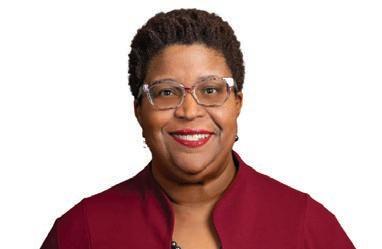

Delaware changes corporate law, a victory for captains of industry. Page 4
Pension Funds
North Carolina treasurer looking to end sole trustee model. Page 5
Finance
Women leaders say taking charge of their own personal development is key. Page 6
Retirement Plans
Rick Funston aims to help plan duciaries with new handbook. Page 8
Private Equity
Pophouse Entertainment Group closed its debut fund at more than €1 billion ($1.1 billion). Page 8
Foundations
Knight Foundation names Rebecca Carland as its new CIO. Page 20
DWS Group was ned €25 million ($27 million) by German prosecutors for a “negligent infringement” related to its ESG statements and control processes, concluding a three-year investigation into greenwashing.
The ne was issued by Frankfurt Public Prosecutor’s of ce, a statement by the prosecutor said. It follows a $19 million penalty issued by the U.S. Securities and Exchange Commission for misstatements made in DWS’s environmental, social and governance processes.
The German prosecutor’s conclusion related to “de cits in the past regarding certain ESG-related doc-

umentation and control processes, procedures and marketing statements,” DWS said in a separate statement on April 2.
The €1 trillion asset manager “advertised products with certain
Kate Burke was appointed as the next CEO of Allspring Global Investments effective July 1, according to a news release.
Current CEO Joe Sullivan will continue to serve as executive chair of the board and work closely with Burke.
Burke joined Allspring in 2023 as president and also began serving as a director on the company’s board.
Sullivan said in the release. “Kate has been a great t with our organization and shares our mission. ... I am proud to pass the torch to her as she leads Allspring into the future.”
Prior to Allspring, Burke held several roles at AllianceBernstein including chief operating of cer and chief nancial of cer over the course of 18 years.
ecological and social characteristics (ESG) between mid-2020 and the end of January 2023,” a translation of the prosecutor’s statement said.
“The impression created in the capital market of DWS Group’s sup-
posed market leadership in sustainable nancial products was not, or not fully, ful lled by the business organization itself. ... Statements in external communications such as being a ‘leader’ in the ESG eld or ‘ESG is an integral part of our DNA’ did not correspond to reality,” the statement added. The size of the ne was determined based on parent company Deutsche Bank’s revenue, it said.
DWS said in its statement that it accepted the ne and that, in recent years, “we have already publicly acknowledged that in the past our marketing was sometimes exuberant. We have already improved our internal documentation and control processes, and we continue to do so.” The manager also cooperated fully throughout the investigation, the statement added.
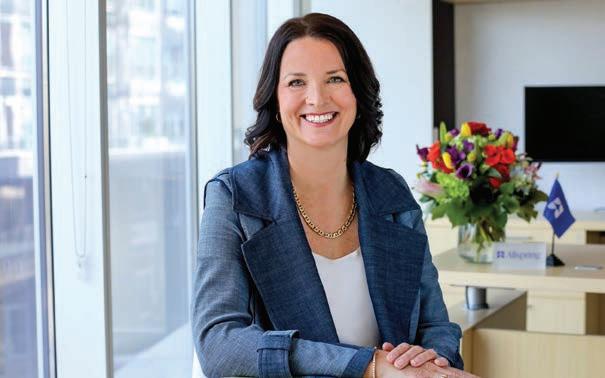
Pensions & Investments is accepting late responses to the annual money managers survey. Firms managing U.S. institutional, tax-exempt assets are eligible. Results will run June 16.
To request a survey or obtain further information, please contact Anthony Scuderi at ascuderi@pionline.com or 212-210-0140, or visit www. pionline.com/section/surveys. Money managers surveys overdue
Burke will not retain the president title and Allspring is not currently naming a new president, according to a spokesperson for the rm.
“We believe that through continued investment in our platform and our people we are truly elevating investing, and working to deliver consistent, positive outcomes for clients,”
Burke said in the release that, “Since Allspring began its journey as an independent rm, Joe Sullivan’s vision and leadership has had profound impacts on the organization, its strategy, and momentum. ... With this solid foundation, I am honored and humbled to be tasked with leading Allspring into our next chapter.”
Allspring became independent
Against an economic backdrop of the rich getting richer and the poor poorer, BlackRock CEO Larry Fink said his rm succeeded in transforming itself over the past year to meet the moment and address America’s retirement crisis along the way.
BlackRock, the world’s biggest asset manager with $11.6 trillion in client assets, managed to move forward in a fraught political environment, Fink said. Today, “many countries have twin, inverted economies: one where wealth builds on wealth; another where hardship builds on hardship, (reshaping) our politics, our policies, even our sense of what’s possible,” he wrote in his latest annual letter to BlackRock clients and shareholders.
from Wells Fargo & Co. in November 2021.
Burke told Pensions & Investments last year in an interview that deep client relationships and customized approaches are critical for asset management.
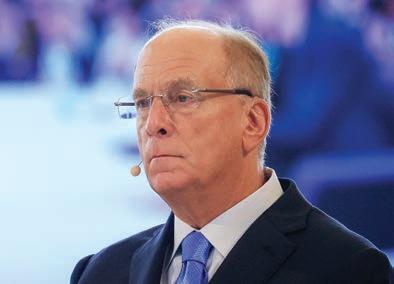
BlackRock’s antidote for heading off pitchfork-wielding protestors? Portfolio exposures, eventually tokenized, to asset classes such as infrastructure, private equity and other private market investments, hitherto the domain of wealthy, sophisticated investors, Fink suggested. Providing retail investors with access to those asset classes will bolster their 401(k) retirement accounts, he added.
The industry veteran rejected the view, underlying the recent rise in protectionism, that the failures of capitalism make this the time to try something else. “Protectionism has returned with force. The unspoken assumption is that capitalism didn’t work and it’s time to try something new,” he said. Fink said it would be better to see the problem
“Where we’re making investments (is) in trying to improve the speed in which we’re able to provide a higher level of customization,” she said last year.
Allspring had $605 billion in assets under advisement as of Dec. 31.
as too few people being able to enjoy capitalism’s successes until now. Over the past year, BlackRock has doubled down on its mission to broaden the universe of investors with access to the capital markets driving global growth now.
“The solution isn’t to abandon markets; it’s to expand them,” Fink asserted.
Enabling Mom-and-Pop investors to gain access to private market segments they previously found inaccessible would mark the nal stage of market democratization, a process that’s unfolded over the past 400 years, he wrote.
Fink said BlackRock’s acquisitions last year –of infrastructure heavyweight Global Infrastructure Partners, private equity veteran HPS Investment Partners and private markets data rm Preqin –- have positioned the rm to lead that democratization of private market exposures.
“BlackRock has always had a foot in private markets but we’ve been – rst and foremost – a traditional asset manager. That’s who we were at the start of 2024 but it’s not who we are anymore,” Fink said.
Trump tariffs renew interest in broadening portfolio exposures
y B DOUGLAS APPELL
International equities, which powered past U.S. equities in the rst quarter of 2025 after years of bringing up the rear, could see a continued pickup in in ows with the globe-spanning tariff regime President Donald Trump unveiled April 2 helping make diversi cation fashionable again.
Sharp setbacks since the start of the year for “Magni cent Seven” technology giants Alphabet, Amazon, Apple, Meta Platforms, Microsoft, Nvidia and Tesla, accelerated over the past week by the threat of unprecedented tariff hikes, have served to refresh the truism in investors’ minds about not putting too many eggs in one basket, or seven baskets for that matter, analysts say.
Institutional investors haven’t wanted to diversify away from highly concentrated exposures to the Magni cent Seven, which accounted for roughly 30% of the S&P 500 index for much of 2024, as long as that was working

for them, said Elias Erickson, lead portfolio manager for Ninety One’s international and global equity franchise strategies. Now, however, relatively steep year-to-date
declines through April 8 of 45% for Tesla, 31% for Apple, 28% for Nvidia, 23% for Alphabet, 22% for Amazon, 16% for Microsoft and 13% for Meta have renewed interest in broadening ex-
posures “and international is a good place to do that,” he said.
In a market where the Magni cent Seven are garnering less laudatory monikers now such as the “Meltdown Seven,” Meketa Investment Group is working with clients previously comfortable with allowing market gains to push their domestic equity exposures past target ceilings to rebalance more often — a goal that has left Meketa busy on the international equity front now for 18 to 24 months already, said Hayley Tran, managing principal and head of equity research.
Other portfolio managers report similar changes afoot this year.
Julian McManus, a portfolio manager on Janus Henderson’s global alpha equity team, said his efforts last year to convince investors that the Magni cent Seven’s fantastic run in recent years had left them overcrowded and overvalued fell for the most part on deaf ears.
“I was banging my head” against a wall of “recency bias and con rmation bias (arguing that) the stage is set to make some really super normal returns in international for the next few years,” he said.
GEPF bets big at home, despite dif culties that include economic growth
y B CHRISTOPHER MARCHANT
As emerging markets continue to languish — and in some cases even disappear — from U.S. and European pension fund’s asset allocation, Siso Sibiya, head of investments at the Government Employees Pension Fund, Pretoria, South Africa’s largest pension plan, is convinced they’re missing out on investment potential.
South Africa has had well-documented dif culties, such as rolling blackouts that were estimated to cost the economy 2.9 trillion rand in 2023, as reported by Bloomberg; and GDP growth of 0.7% that same year, according to World Bank Group data.

INVESTMENT POTENTIAL: GEPF’s Si so Sibiya
Sibiya maintains that it is a country that carries great investment potential, and expresses little concern that his pension fund has an 85% domestic-focused asset allocation.
Some results back up Sibiya’s po-
sition. The FTSE/JSE Africa All Shares Index has shown positive returns in ve of the last six years, two of those years being above 10%.
As well as the GEPF approach to consolidate investments domestically, Regulation 28 of the country’s Pension Funds Act, rst enacted in 1956 but amended as recently as July, dictates that 55% of occupational retirement plan’s (not applying to GEPF) assets are outright mandated to be invested in the domestic markets.
Even thought the GEPF has no mandate by the national government to invest domestically, it has adopted (and goes beyond the domestic allocation benchmarks of) Regulation 28 as “best practice prudential standard.”
“South African equities have been very undervalued. Compared to something like the Magni cent Sev-
en (U.S tech) stocks where valuations have been going through the roof, the South African market has been extremely cheap. One obviously has to ask is that a value trap, however we are of the view that there are pockets of value, but broadly our market is reasonably priced,” said Sibiya.
If there’s one myth that Sibiya is keen to bust, it is that South Africa — and the continent as a whole — carries an adversely high risk pro le.
“Those risks are not as elevated as perceived. Our fund is (heavily) invested in South Africa. Yes, there’s risk there, but nothing broke, it’s still functioning. We are looking to establish greater awareness that this country is not as risky as many investors and asset allocators think it is,” he said.
GEPF had 2.38 trillion rand ($129 billion) in assets as of March 31, 2024
— up 3% over the year.
GEPF also has a target allocation of 5% to the rest of Africa; only 15% of its portfolio is invested outside of the continent.
High-interest environment
South Africa as a nation has also experienced recent crises such as rolling energy blackouts, and pointedly for an asset owner, rates of interest that currently stand at 7.5%, and have been above 5% since July 2022.
GEPF invests approximately 60% in equities and only 30% in bonds, with the remaining 10% in areas such as cash and real estate. This asset mix presents challenges in a high-interest environment.
“High in ation was a global phenomenon, which then ended up here as well. It had some knock-on effects
The U.S. real estate market has faced challenges over the past few years, including high interest rates, and returns have suffered as a result. The core real estate strategy (lowest risk since it relies on high-quality, low vacancy rate properties) that large pension plans generally favor has not seen returns hold up. Going forward, the Trump administration’s tariff impositions seem likely to create an uncertain macroeconomic picture and potential further headwinds for the real estate sector.
U.S. fundraising slips: U.S. real estate funds raised $48.4 billion in 2024, down from $58.7 billion the previous year. Distressed funds saw an increase to $4.4 billion from $1 billion while most of the other strategies experienced lower fundraising. Fundraising totaled over $120 billion in both 2021 and 2022.
U.S. real estate fundraising
Negative returns: North American real estate funds have had negative internal rates of return for ve straight quarters through the June 2024 period. Core, core-plus, valueadded and opportunistic strategies have had several quarters of negative IRR. Real estate debt funds have been a bright spot, including a 7.1% IRR in the second quarter of 2024. North American real estate fund returns
Elevated of ce vacancies:
Of ce vacancy rates remain high, edging up to 20.4% in the rst quarter from 20.3% in the previous period. Multifamily, retail, and industrial properties’ vacancy rates held steady vs. the prior quarter.
Vacancy rate by property type
Pension plans stick to core: Most of the largest public pension plans that broke out their real estate holdings by strategy for Pensions & Investments’ top 1,000 plan sponsor survey had the majority invested in core real estate. These pension plans had $2.9 billion to $17.3 billion in real estate
A legislative clash over changes to Delaware’s vaunted corporate law ended last week in a victory for captains of industry, seeking expanded safe harbor provisions, over minority shareholders.
Amendments to state corporate law, which included a narrowing of shareholder access to company books and records, sailed through Delaware’s Legislature in what was seen as a win for industry titans such as Tesla’s Elon Musk and Meta Plat-
forms’s Mark Zuckerberg.
Institutional investors, by contrast, were widely seen as the losers, both in terms of the outcome as well as the legislative process that led to it.
Organizations such as the Council for Institutional Investors and the International Corporate Governance Network, representing close to $100 trillion of public capital, “unanimously opposed the bill as ... detrimental to stockholder rights and protections, and their concerns and warnings were completely ignored,” said Mark D. Richardson, a partner
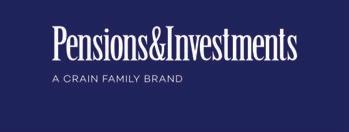


in Delaware with law rm Labaton Keller Sucharow.
Both sides had argued that a loss would undermine Delaware’s status as the premier legal home for companies listed in the U.S. — a franchise that brings the state more than $2 billion a year in registration fees, or roughly 30% of annual expenditures.
Now, with the legislative ght concluded, the focus could shift to how much substance there was in institutional investors’ warnings that the amendments, signed into law by Gov. Matt Meyer on March


25, could prompt them to push their portfolio companies to re-register in states offering better shareholder protections.
On that score, Meyer said in an interview he’s con dent institutional investors don’t have anything to worry about from the latest amendments.
“Delaware courts and Delaware general corporation law is and will remain the gold standard, protecting the rights of stockholders, protecting the rights of institutional investors and retail investors as it has for generations,” he said.









































Still, he said, if certain institutional investors nonetheless feel Delaware law no longer provides clarity, predictability and fairness, then there’s more work to do, not only in communicating why the state remains “the preeminent place to be a stockholder in a company but also making sure we understand the substantive de ciencies that they see and working to address them.”
Going it alone







Critics note that that willingness to work with institutional investors was notably absent among the legislative leaders who led the charge to amend Delaware’s corporate law in the space of six short weeks. The starting gun for that abbreviated legislative run, they contend, was an article in The Wall Street Journal in late January suggesting Zuckerberg was mulling shifting Meta’s registration to Texas from Delaware, a year after Musk did the same with Tesla. The normal amendment process — where everyone is consulted, time is taken to hammer out compromises and the resulting bill can be widely embraced — was replaced by a “closed process” that largely dismissed or ignored inputs from institutional investors, said Charles M. Elson, retired professor of the Edgar S. Woolard Chair in Corporate Governance at the University of Delaware. Despite the governor’s assurances, some big institutional investors remain skeptical.
Matthew G. Jacobs, general counsel for the $538 billion California Public Employees’ Retirement System, in a March 14 letter to Delaware’s legislative leaders, said should the amendments pass, CalPERS’ previous opposition to attempts by portfolio companies to reincorporate out of Delaware would give way to a “much more case-by-case view because many states provide corporate law that is signi cantly more investor-protective than Delaware law.”
On March 27, after Meyer signed the bill into law, CalPERS CIO Stephen Gilmore expressed disappointment with Delaware’s decision to reduce governance rights for minority shareholders, saying the move will heighten institutional investors’ focus on private markets offering more latitude to hammer out better governance provisions.
Likewise, Severine Neervoort, global policy director with the International Corporate Governance Network, which reports members from more than 40 countries with combined assets under management of $90 trillion, called Delaware’s move to weaken the safeguards protecting minority investors from potentially abusive acts or transactions involving interested parties “very disappointing.”
North Carolina is one of only three states that has a “sole trustee” model for its pension plan, meaning one person is responsible for the plan’s investment decisions. Brad Briner, the state’s newly elected treasurer and current sole trustee, wants to change that.
“Governance always leads to performance,” Briner said, noting that the $127 billion North Carolina Retirement Systems, Raleigh, consistently falls toward the bottom of the ranks when it comes to investment performance in the long term. For the retirement system's latest scal year, which ended June 30, NCRS ranked last in its ve-year return rate and was among the bottom six for it's 10-year return rate, compared to other public pension plans, according to P&I data.
Most states have a board of trustees, as opposed a sole trustee, responsible for managing their pension fund’s investments, which Briner said is due to two reasons.
“The rst is concentrating that kind of authority in a single public of cial has risks that that public ofcial behaves badly,” he said, though he gave the caveat that North Carolina has not had that issue.
However, the more pressing issue, according to Briner, is that a sole trustee model “has costs in terms of investment performance.”
“We have seen sole duciaries decide to do exactly the opposite of their predecessor and change investment strategies every four years. And that is the enemy of long-term performance,” he added.
In 2014, former North Carolina Treasurer Janet Cowell formed a commission to study the state pension system's governance structure, and the commission's report ultimately suggested switching to a sole trustee model.
"At the time, the reception from the legislature was, 'This is interesting, but why does it matter? Our performance has been okay,'" Briner said. However, 11 years later, he said, "that performance gap has widened tremendously," and lawmakers are interested in ways to improve it.
Historically, pension plans were formed with a sole trustee — typically the state treasurer — but as “portfolios became more and more complex, then they started to move the responsibilities away from the sole duciary to boards,” explained Rick Funston, CEO of governance consultant Funston Advisory Services.
The challenge with a board of trustees, according to Funston, is ensuring that board members are “nancially literate and investment literate,” though he noted that some states have requirements around their board members’ expertise.
Briner, who campaigned on the promise to change the pension fund’s governance model to a board of trustees, said he wants to create a ve-person board, which would include the treasurer, “with real criteria around expertise,” including a minimum of 10 years of professional money management experience.
In addition, there would not be compensation associated with the

board to avoid drawing interest “for the wrong reasons,” Briner said.
Prior to running for treasurer, Briner was the co-CIO of the investment rm Willett Advisors, which manages the philanthropic assets of Michael R. Bloomberg, including those of Bloomberg Philanthropies.
He left his position to run for ofce, noting, “I did run for of ce with the intent to diminish the power of the of ce.”
While the North Carolina Retirement Systems currently has an investment advisory committee, Briner said the committee is “purely advisory." Switching to a board of trustees model would shift the committee from "from advisory to duciary" and ultimately give board members
a say in major investment decisions, the North Carolina treasurer explained.
Since Briner suggested the idea in his campaign for treasurer last year, pension of cials from all over the country have reached out with advice, he said, adding that he’s been in “real dialogue” with at least a dozen other states.
Briner’s been working with state legislators to draft legislation creating a board of trustees, and “there’s been real reception to hearing our ideas” on both sides of the aisle, he said.
On March 24, North Carolina House Majority Leader Brenden
Jones, along with four Republican lawmakers, led the rst version of such a bill, named the 2025 State Investment Modernization Act. Navigating an uncertain future Separate from his plans for changing the pension fund’s governance, Briner is also working to navigate an uncertain future. When asked how the Trump administration’s policies and corresponding market uncertainty have impacted his decisions, Briner said that the pension fund entered the year with about $8 billion in excess cash, but “we have been very cautious to put that to work.”


cording to women who’ve emerged in the institutional investing space.
When there’s uncertainty in the nancial markets, political world or even in one’s own career, a key to success is being able to navigate through different environments, ac-
“You just have to survive these environments and nd opportunities,” said Samara Mejia Hernandez, founding partner of Chingona Ventures. “It’s also a great time to invest as well. There’s opportunities when others are backing out … There’s a lot of opportunities to really double down on things.”
March was designated as Women’s History Month, a celebration
that highlights the contributions women have made to society — such as being the rst to do something, or even just being there to help others.
Take Hernandez, for example. In 2019, she left an early-to-growthstage venture capital rm to found Chingona Ventures. The now $60 million emerging venture capital rm invests in preseed companies in their rst institutional round of funding.
After people lay the groundwork in their careers, they “dare to be different” — something Hernandez said she and the founders she has backed have done.
“The way I got to where I got to was by doing things differently, thinking (about) things differently (and) not accepting the standard (or) the status quo of ‘this is just how it’s done,’ or ‘we’re just going to have to do it that way,’” Hernandez said.
“The people who do make history are those who dare to be different and take a calculated risk on trying these new ways of investing, new ways of thinking about industries (and) disrupting certain ways that it has been done,” she added.
While some translations can be vulgar to some, the Spanish term “chingona” can mean “strong, independent woman” — and in Hernandez’ view, it speaks to her.
With alternative investments like private markets and real estate delivering strong performance in institutional portfolios, including pension funds, the DC industry is engaged in weighing the suitability and benefits of these investments for their plan participants.
We sit down with Paul Colonna, President and CIO of Lockheed Martin Investment Management Company to learn how his DC plan has successfully integrated private equity into their target-date portfolio, from decision point to implementation path taken, and how it aligns with participant objectives.
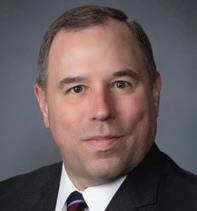

Women control a growing share of global wealth, so their voices are essential in shaping nancial products and investment decisions, noted Sumali Sanyal. At the $20 billion asset manager Xponance — itself founded by an entrepreneur who wanted to improve diversity in the industry — she serves as the managing director and senior portfolio manager of the systematic global equities platform.
“Women contribute different values and new approaches, fostering creativity and innovation — which can lead to increased pro tability,” Sanyal added. “Women tend to adopt a more cautious approach to risk, conducting thorough research and prioritizing long-term investments. Women bring diverse perspectives to asset management, which leads to more comprehensive risk assessments, innovative investment strategies and better client outcomes.”
The industry isn’t easy to jump into, however, as nance may not be appealing to all, noted Meghan Dean, managing director, senior portfolio manager and co-lead of the securitized sector at the Baird Advisors.
Dean was an economics major in college, and comfortable studying monetary policy — so bonds were less familiar to her as she started at the $150 billion asset manager. But by way of now managing director and Chief Investment Of cer emeritus Mary Ellen Stanek in establishing a new rm, Dean said the environment “was very green because of the backdrop of this entrepreneurial spirit.”
Stanek gave Dean the opportunity to take on a lot of projects to launch Baird Advisors from Stanek’s former rm Firstar Investment Research and Management, and Dean said doing the work caught her interest.

Join





Private Markets
Chicago | April 16-17, 2025
Endowment & Foundation Assets Roundtable
New York | April 29, 2025
Canadian Pension Management
Toronto | May 13-14, 2025
Insurance Allocators Roundtable
New York | May 20, 2025
Retirement Income Strategies
New York | June 10-11, 2025
UK Pension Fund Tour
London | June 10-11, 2025
Fixed Income & Credit
Dallas | September 9-10, 2025
Influential Women In Institutional Investing
Chicago | September 18, 2025
Pension Derisking
Chicago | October 7-8, 2025
Defined Contribution West
Pasadena | October 26-28, 2025
WorldPensionSummit
The Hague | November 4-6, 2025
Public Funds
Austin | November 19-20, 2025
2025 Conference Sponsorship opportunities are available. Contact Kimberly Jackson at kjackson@pionline.com | 978.317.5032 or Andy Jenkins at andy.jenkins@pionline.com | 703.725.6161 for more details.
Registration questions?
Please contact pi-registration@pionline.com. Visit www.pionline.com/conferences for more details.


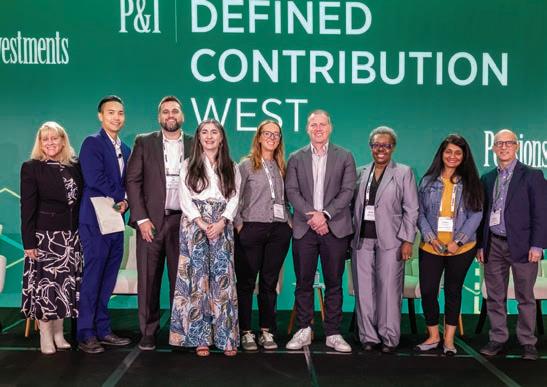

Public Investment Fund, Riyadh, Saudi Arabia, has bought popular mobile gaming app Pokemon Go via its subsidiary Scopely, in a deal valued at $3.5 billion.
Scopely said in a blog on its website that it is to purchase the gaming division of Niantic, which is the creator of Pokemon Go, an app that became a viral sensation upon its launch in 2016. The game, which involves traveling to real world locations to capture, train and ght virtually imposed Pokemon creatures, has also spawned events such as the Pokemon Go Fest, hosted in cities including New York and Osaka, Japan.
Saudi PIF has an estimated $925 billion in assets and previously committed to investing $38 billion into the video games industry as part of its Vision 2030 initiative, according to Bloomberg.
The acquisition of Niantic will incorporate the business’ entire game development teams into Scopely, as well as a game portfolio including Pokemon Go and further titles such as Pikmin Bloom and Monster Hunter Now.
The Niantic games business has over 30 million monthly active players and generated more than $1 billion in revenue in 2024. Last year, Pokemon Go had more than 100 million unique players. Niantic's games are known for inspiring walking to destinations while playing, and last year players took a combined 3.94 trillion steps while using one of its apps.
The sovereign wealth fund also owns ventures in the sporting world, such as the Saudi International golf tournament, and the English soccer team Newcastle United.
CHRISTOPHER MARCHANT
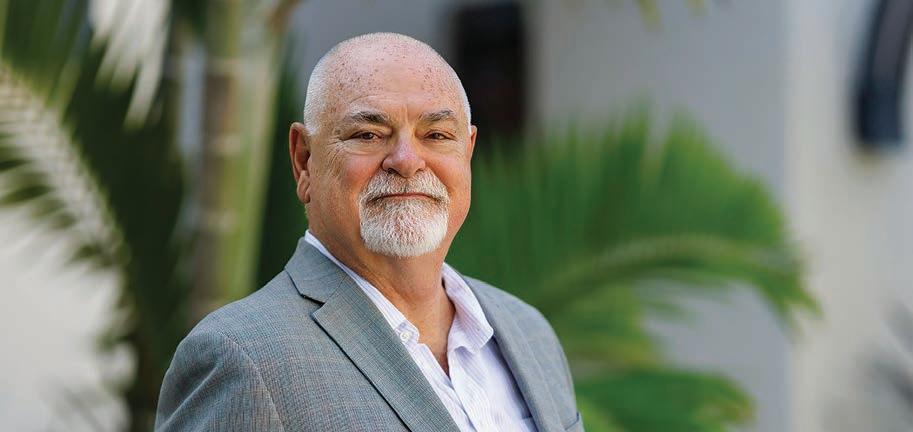
“Governance is like parenting. Everyone just kind of assumes you'll know how to do it, and they don't really give you much instruction on how to go about doing it,” said Rick Funston, CEO of governance consultant Funston Advisory Services.
That’s one of the reasons why Funston decided to write his latest book, “Transforming the Dialogue: Fiduciary Essentials,” which serves as a handbook for duciaries of public retirement plans and multiemployer plans.
When becoming a duciary and assuming the responsibilities that come with it, “there is no forgiveness period; there’s no learning curve, and there’s just an enormous amount of material for people to try and digest,” Funston said. “So, this (book) was just one way to try and get another resource into their hands that they could use as needed.”
Through his business, Funston offers an online governance learning resource known as Board Smart, which goes hand in hand with his new book, published March 31. He took the material
Money, money, money: ABBA legend’s Pophouse closes fund at over $1 billion
Pophouse Entertainment Group, an entertainment and music investment rm co-founded by ABBA’s Bjorn Ulvaeus, closed its debut fund Pophouse Fund (No.1) at more than €1 billion ($1.1 billion).
The fund reached its hard cap and is one of the largest rst-time private equity funds to be raised in Europe in the past 10 years, a news release said. The rm has also raised more than €200 million in secured capital through co-investment vehicles. It raised capital from pension funds, endowments, sovereign wealth funds and family of ces, the news release said. Investors could not immediately be identi ed.
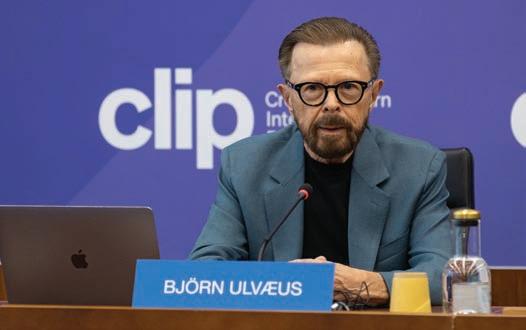
The fund acquires music catalogs and intellectual property. The fund is about 30% deployed, with artist partnerships including rock band KISS, Cyndi Lauper, as well as Swedish artists Avicii and Swedish House Ma a. Pophouse was founded by Ulvaeus and Conni Jonsson, founder of Swedish private equity rm EQT. “Facing unprecedented disruption caused by streaming and technology, music intellectual proper-
ty presents a differentiated, lifetime opportunity for investors,” Jonsson said in the release. “We are reshaping the entertainment industry by applying an active, value-add approach that unlocks future generations for fandom.”
SOPHIE BAKER
available on Board Smart, which includes podcasts and transcripts, “and condensed it down into highlights of each of the major topics,” he said, so the book can serve as an overview of the program’s material.
In the book, Funston aims to create a clear framework for duciaries, which includes their purpose, their essential relationships and their duties. The book also covers what Funston calls oversight responsibility, which often presents a challenge of how to “oversee without getting involved in the day-to-day operations and trying to become part of management.”
Since starting Funston Advisory Services in 2010, Funston said the biggest change he’s seen over the last 15 years is the velocity of change itself, citing events such as the COVID-19 pandemic. He contended that duciaries “need to be able to have a framework and a lens to look at these changes and gure out how are they going to adapt from a policy perspective.”
COURTNEY DEGEN
Candidates looking to obtain the CFA Institute’s Certi cate in ESG Investing may have missed their opportunity.
The institute recently announced a name change for the program, which focuses on preparing applicants “to incorporate ESG factors (environmental, social, and governance) into your investment decision-making process.”
Starting April 8, the CFA explained on its website, in place of that ESG certi cate, applicants who shell out $890 to complete the institute's online study course will receive a sustainable investing certi cate.
The change re ects the fact that since the certi cate rst launched three years ago, when headquarters took it over from CFA U.K. and made it a global offering, the concept of ESG investing "has evolved and has, at times, had varied meanings in different markets,” making “sustainable investing” a more appropriate term
for capturing the broader, long-term impact and investing goals the certi cate aims to support, the CFA said.
But beyond that top-level switch, the term isn’t being expunged from the curriculum, a CFA spokesman said, explaining that ESG remains a useful framework for enabling the analysis of the three separate components the term points to.
And if ESG has become a political football in the U.S., there are signs that pushback isn’t extending beyond the country’s borders to any considerable degree. According to the spokesman, the CFA’s annual report showed 20,500 applicants registering globally to pursue the institute’s Certi cate in ESG Investing for the scal year through August 2024, up from roughly 17,000 for the prior year and 13,600 the year before that.
The spokesman said numbers for U.S. applicants aren’t broken out.
DOUGLAS APPELL

While outsourced chief investment o icer services have gone mainstream, with growing mandates from DB and DC plans, foundations and endowments, healthcare organizations and insurers, their approach is anything but standard. OCIO providers are bringing expertise to meet the very specific investment, governance and risk assessment needs for each client — even within each of the institutional segments. In a complex market environment that encourages “the outsourcing of everything,” what are the top priorities for di erent institutional clients? How are providers addressing their pain points and what solutions are getting traction? This panel of experienced OCIOs discusses what’s top of mind for asset allocation, including fixed income, private markets and alternatives; the nuances in longterm portfolio objectives, including liability-driven investing for pension funds, asset-liability management for insurers and liquidity needs for nonprofits; as well as their approaches to providing bundled services, selecting top asset managers and market insights that are baked into OCIO mandates.

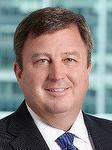



Sponsored by:
ANDREW KLEEMAN
The need to develop the digital infrastructure for tomorrow’s economy has never been greater. Where previously the widespread adoption of cloud services underpinned development, the transformational power of arti cial intelligence is now driving the need for unprecedented levels of investment. However, recent news in the sector requires investors to rethink their approach to investments in AI. In particular, the evolving capital needs of the sector, driven by expanding demand, larger asset builds, as well as the changing macroeconomic/geopolitical environment and other factors, could open up further opportunities across asset classes — perhaps none more so than private credit.

Data centers — particularly AI-driven hyperscale facilities, which now account for over 40% of worldwide capacity — are expected to continue being built at a record pace. Recent estimates peg the global spend on hyperscale data center builds in 2025 to be at roughly $220 billion among major cloud providers. Moreover, AI expansion is expected to steer further investor interest in related sectors, such as power generation and transmission infrastructure. Also complicating the picture are developments such as DeepSeek’s R-1, which is expected to require far less computational power compared to prior AI models and has led to a reassessment of long-term infrastructure needs.
What this means is that investors of all types should look to re-evaluate the growth assumptions that would have underpinned their previous investments in large-scale data centers. A key consideration in making this assessment is which data centers will continue to retain their value once the critical mass of generative AI models have been trained and are primarily being used for inference, or being applied to actual use cases. While latency may not be a major consideration for the training of AI models, proximity to population centers will likely become a critical factor in the models’ future usefulness to end users.
The capacity requirement of newer data center builds continues to increase to accommodate AI use cases, which include both AI-training and inference functions. Developers and sponsors must therefore expand the pool of capital available to fund the construction of larger-scale projects that cater to these capacity requirements. In recent years, developers had mostly looked to the asset-backed security market to take out construction nancings for their developed assets. The ABS market, in which data centers currently account for approximately 5%, or roughly $25 billion, of total issuances in 2024, allowed developers to add completed and cash- owing assets under an existing master trust structure, raising additional funds in a more time-ef cient manner. The typical ABS structures worked well for developers with multi-tenanted facilities, as ABS investors saw these as a hedge against lease renewal risk. The ABS market was therefore a logical place for the re nancing of construction loans that began to reach their maturities between

resulting in issuances which now face a pending wall of maturities.
The newest generation of hyperscale data centers geared to run AI models, which can cost up to $2 billion to build, are not as easily suited to ABS nancings due to their sheer size. Construction loans for these types of data centers have now also reached the stage where they must be re nanced, in addition to the looming maturity wall brought on by the ABS issuances mentioned above. In recent years, these types of larger, hyperscale-focused assets have been developed as single-tenant facilities under longer-term contracts with initial lease terms of up to 15 or even 20 years. Characteristics like these have allowed developers to tap and gain the attention of another large source of capital: private credit.
From the developers’ perspective, private credit offers a diversi cation of funding sources, access to institutional investors that can provide signi cant upfront capital for longer time horizons, and expedited processes without formal ratings. Certain institutions also bring teams with considerable experience in project nance and the ability to structure bespoke credit solutions. The bene ts to lenders include credits based on leases with highly rated counterparties, long-term contracted cash ows and premiums for illiquidity. Since over $10 billion of U.S. data center debt was re nanced in the last three years alone, it is likely that private credit will emerge as one of the prominent asset classes that address the re nancings of incoming ABS maturities.
As the share of stabilized data center re nancings begins to attract investors with
longer horizons, investors will have to shape their views on how long-term data center demand can shift based not only on newer technologies and existing infrastructure bottlenecks, but also how the development of AI is to be addressed by regulatory bodies.
The debate on regulation vs. innovation has become the latest headline-grabbing phase of AI’s transformative power. At the recent Arti cial Intelligence Action Summit in Paris, representatives from around the world gathered to discuss AI-related issues. As expected, a divergence between the nations on how to regulate AI quickly took shape, with some leaders pushing for an international agreement that pledges accessibility and inclusivity while others worry such a declaration could sti e innovation. The summit underscores how nations across the globe, many of which have yet to pass comprehensive regulations of their own, are choosing to approach this topic. Regulation, or the lack thereof, represents yet another important consideration for investors to take a longterm view on, as it will undoubtedly shape the future development of digital infrastructure.
Considering the dynamic nature of the current AI landscape, investors of all types must have the exibility to assess several impactful credit considerations. As future fundraising continues to step away from ABS and other quasi-public styles of issuances, a continued increase in private credit opportunities is likely to arise.
Once hailed as a global market leader, China has fallen short of investor expectations in recent years with lackluster equity returns. Yet, as stimulus measures take effect and shareholder returns improve, a pressing question emerges: Is it time for investors to rethink their stance on China?
This question is particularly relevant given the backdrop of recent market movements. Until the September 2024 rally, which saw markets rise by around 30%, China's stock markets had been underperforming. Between August 2021 and August 2024, the MSCI China index declined by 35.5%, while the MSCI ACWI gained 18.4%. This underperformance re ected efforts to address a property bubble, escalating geopolitical tensions with the U.S. and its allies, and investor concerns over government crackdowns on sectors like tech and education, compounded by strict COVID-19 measures.
The government initially implemented a series of primarily monetary measures aimed at boosting growth. However, these early efforts failed to inspire investor con dence. By late 2024, the policy approach evolved into a more balanced mix of monetary and scal measures. A scal package was introduced to stabilize local governments under nancial strain and to support broader economic recovery efforts, marking a more decisive shift in strategy.
While these measures signal stronger government support for risk assets and aim to mitigate de ation risks, they re ect China’s measured, long-term approach to economic stability. The markets were initially delighted, and the rally in September, which saw the MSCI China index recover from a decade-low price-to-earnings of 10x to 12.3x, indicated that investor sentiment had possibly bottomed out. However, the question remains: was this a temporary adjustment or a turning point for China’s economic prospects?
China is undergoing a profound economic transformation, shifting from an investment-driven model to a "dual circulation" strategy. This approach emphasizes strengthening domestic production and consumption while maintaining international trade ties. Central to this shift is the government’s focus on technological advancement and high-end manufacturing, aiming to reduce reliance on traditional growth drivers such as property and infrastructure.
In line with this shift, recent policies re ect a preference for structural reforms over short-term

market stimulation. Reserve ratio cuts have been introduced to enhance liquidity, with the objective of directing capital towards productive investments rather than fueling consumer debt. Similarly, property sector stimulus measures aim to clear excess supply and restore balance, rather than arti cially boosting demand for speculative purposes.
Despite the challenges, rising incomes and urbanization position consumption as a key potential growth driver. However, for this potential to be fully realized, the government will need to prioritize improvements in social security, healthcare, and education. Strengthening these areas is essential to boosting consumer con dence, reducing precautionary savings, and unlocking the full potential of domestic consumption.
China’s economic transformation is unfolding against the backdrop of increasingly contentious relations with the U.S., particularly after its “Made in China 2025” strategy, which aims to make China a global leader in critical industries. These ambitions have intensi ed tensions, with the U.S. imposing tariffs on Chinese goods. As the global power
structure shifts from unipolarity to multipolarity, these geopolitical tensions continue to be an area of concern for investors.
Nevertheless, fears that global supply-chain shifts — onshoring, nearshoring and friendshoring — might marginalize China have proven overstated. Its trade surplus and role in complex value chains have grown, while Chinese manufacturers have strategically invested in regions like Southeast Asia and Turkey to maintain their integration into global trade networks. Notably, China's exports to the U.S. now account for just 14% of its total exports, down by more than 25% over the past decade. In the eight years it has had to adapt to a change in U.S. policy, China has been working steadily to diversify its trading relationships. Instead of xating on events in Washington D.C., investors would do well to focus on China’s domestic economic policy.
China’s transformation driving investment potential
Meanwhile, Chinese companies are moving from a “growth-at-allcosts” phase toward a focus on pro tability and shareholder returns. This shift is supported by policy changes, including reforms by the China Securities Regulatory Commission and new performance

metrics for state-owned enterprises. Re ecting this broader trend, 2022 and 2023 saw record share buybacks and a near-tripling of dividend payouts. For instance, Alibaba and Tencent have increased share buybacks and dividend payouts, signaling more disciplined capital allocation and a stronger focus on delivering value to shareholders.
This focus on shareholder returns is set against substantial investment opportunities. With over 5,000 companies listed on domestic Chinese exchanges and another 2,000 in Hong Kong, China offers a vast, underrepresented market in global equity indexes. While macroeconomic concerns persist, there is a compelling case for selective, bottom-up stock picking. Rapid growth in the industrial, technology, and consumer sectors provides meaningful diversi cation opportunities for investors.
Several of China’s sectors also present attractive long-term growth prospects. In decarbonization, China is the largest emitter of greenhouse gases but is also a leader in solar power, electric vehicles, and battery production, making these industries critical to global sustainability efforts. China’s auto industry, particularly its electric vehicles, is on track to become a global success story.
China’s aging population further drives demand in healthcare, creating opportunities in health-
care infrastructure and insurance, among others. The retail landscape is also evolving, with new digital formats like live streaming reshaping consumer shopping habits.
Bottom-up approach to tap into investment opportunities in China
While China’s stock markets are gaining momentum, the more pressing question pertains to the sustainability of this rally. Ongoing reforms and growing shareholder returns highlight the potential of China’s economic transformation to deliver compelling long-term investment opportunities. Despite geopolitical tensions, China’s growing in uence in global trade, technological innovation and its shift towards high-end manufacturing present signi cant prospects for investors who adopt a selective, bottom-up approach to investing.
Investors need to understand China's unique governance model and long-term strategies, which prioritize stability and sustainable growth over immediate market gains. A nuanced approach, supported by thorough fundamental research, can uncover opportunities that may otherwise be missed.
This content represents the views of the author. It was submitted and edited under Pensions & Investments guidelines but is not a product of P&I’s editorial team.
Access Qualified Job Seekers Now Contact Thomas Markley at thomas.markley@pionline.com or 603.305.1967
y B ARI I. WEINBERG
Amid heightened volatility and economic uncertainty, the market for exchange-traded funds holding Treasury in ation-protected securities has rekindled after three consecutive years of out ows.
According to FactSet Research Systems, U.S.-listed TIPS ETFs added $5.5 billion in net in ows through April 4, bringing total assets to $63.6 billion. More than half of those ows went to short-term TIPS products from Vanguard Group and BlackRock. The quarter also included the launch of an ultrashort-term TIPS ETF from F/m Investments.
In a market where tariff policy is expected to both drive up the cost of goods and potentially dampen growth, the $2 trillion TIPS market looks like a haven of protection. The March 31 reopening of the 10-year TIPS auction, for example, saw par value at auction move to $102.34 from $98.92 on Jan. 31, according to the U.S. Treasury.
“From an allocator’s long-term perspective, TIPS is a favorite asset class for real rate exposure,” said Phillip Nelson, partner and head of asset allocation at investment consultant NEPC. “As a rough target, we look at TIPS holdings equal to the size of a Treasury allocation or relative to investment-grade exposure.”
Nelson has observed, however,

that 5-year and 10-year breakeven rates are “currently a little rich.”
Breakeven rates are the spread between nominal Treasuries and TIPS at constant maturities.
According to the Securities Industry and Financial Markets Association, the TIPS market accounts for roughly 7% of outstanding Treasury issuance. TIPS, however, are not traditionally included in xed-income indexes utilized by ETF products.
“TIPS typically haven’t been integrated as components of core xed-income benchmarks,” said Nick Gendron, global head of xed income index product management at Bloomberg LP. “Generally what we’ve seen is that TIPS have been looked at as a separate allocation across a spectrum of xed-income investments.”
TIPS are issued in ve-, 10- and 30-year maturities. “There is a lot of depth across issuance,” said Gen-
dron, “and the main challenge for index providers is creating the most meaningful maturity-based subindices.”
BlackRock’s iShares offers a $14.5 billion broad-based TIPS index ETF with an effective duration of 6.6 at an expense ratio of 0.18%, and an $11.5 billion short-term product with an effective duration of 2.38 and an expense ratio of 0.03%, according to BlackRock, as well as a suite of single maturity ETFs through 2035 that can be used for building a TIPS ETF ladder outside of buying and rebalancing speci c issuances. Vanguard’s $13.6 billion short-term TIPS ETF has an effective duration of 2.5 and an expense ratio of 0.03%, according to the manager.
Year-to-date total returns through April 4 for TIPS ETF ranged from 3.3% for short-term products to roughly 4.5% for intermediate-term products,
according to data from FactSet.
Interestingly, only one product listed in the U.S. market invests in non-U.S. government in ation-protected bonds. The $317 million SPDR FTSE International Government In ation-Protected Bond ETF invests in securities from 20 countries with an aggregate effective duration of 8.9, according to Morningstar. The ETF has a 0.50% expense ratio and returned 4.8% through April 4, according to FactSet.
First introduced in 1997, TIPS are indexed to in ation as determined by the consumer price index. Resetting every month, the principal value increases (or decreases) daily based on an index factor determined by CPI from two months prior. Both interest paid and principal accrual are federally taxable, making TIPS holdings more effective for tax-advantaged accounts and investors, including many target-date funds.
“For TIPS, ETFs have one other potential advantage relative to direct holdings, and that is the ability to provide distributions which can offset or diminish the impact of this ‘phantom income,’” said Daniel He, executive vice president and portfolio manager at PIMCO.
While this year’s TIPS ETFs ows have focused on the short term, He said that PIMCO currently nds the 5-10 year part of the curve the most attractive, expected to bene t both
from more persistent in ation (higher in ation accrual) and a slowing economy (lower real yield). Along with a 1-5 year product, PIMCO offers the only long-term TIPS ETF, the $731 million PIMCO 15+ Year U.S. TIPS Index ETF, among the top-performing TIPS funds this year at 6% through April 4, bene ting signicantly from its extended duration in a falling interest rate environment.
The impact of duration risk in light of in ation, however, sent $10.4 billion rushing out of TIPS ETFs in 2022 as the Federal Reserve pushed short-term interest rates higher. This followed $40.2 billion of net in ows in 2021 as in ation surged with rates near zero amid the COVID-19 recovery.
Even as net in ows have picked back up in 2025, Elisabeth Kashner, director of global funds research and analytics at FactSet, said investors appear “once burned, twice shy.” Yet, recent market uncertainty may be revealing more con dence in the TIPS market.
“Over the last month and a half, we’ve received a lot more questions on TIPS given the uncertainty of the tariff regime,” said NEPC’s Nelson. “Within our OCIO business, clients want to know if they have enough liquidity to meet cash ow needs. They are looking to get more diversi ed, add xed income, and allocate slightly more to TIPS.”





y B LYDIA TOMKIW
In July 2024, the University of Connecticut endowment made a bold move: it decided to drop the majority of its hedge fund investments and replace them with buffer exchange-traded funds.
Now, nine months into the change — amid volatile market conditions stemming from President Trump’s tariff policy — David Ford, chairman of the investment committee of the UConn foundation that runs the endowment, said the change is working.
“I would certainly argue they’re doing exactly what they were put there to do,” Ford said of the ETFs that are managed by Innovator Capital Management.
Ford, a 1988 graduate of UConn, said the turn away from hedge funds was aimed at simplifying something historically and extraordinarily complicated, while using a de ned out-

come instrument with minute-to-minute liquidity.
When the switch was announced, his inbox was ooded with emails.
“We didn't do this because we thought this is where the puck is going, although this is clearly where the puck is going,” he said. “We did
it because of simplicity. We can understand it. Our IC (investment committee) can wrap their minds around it. It's easy to execute … we regain liquidity, which is enormous for an endowment.”
UConn’s endowment returned 12.1% in the scal year ending June 30, 2024. And Ford has now introduced an annual rebalance of the public markets portfolio. The endowment had approximately $650 million in assets at the end of February.
Running an endowment
Ford joined the investment committee seven years ago and was appointed chair in November 2023.
He comes from a hedge fund background. Ford built out the distressed credit business at what was then known as Och-Ziff Capital Management along with a stint at Satellite Asset Management, a George Soros spinout, before start-
ing his own hedge fund, Latigo Partners, in 2005 along with David Sabath. They ultimately sold the rm’s fund business in 2020.
When Ford took over the chairman role, an industry colleague at a large university endowment suggested he read former Yale University CIO David Swensen’s book.
“He created this endowment model, this sort of mythical asset allocation, which produced spectacular returns,” Ford said. “Part of the reason, though, was that there were so many fewer quote alternative asset managers that there was still a tremendous amount of alpha to be gained in that space.”
Ford argues that what used to be alternative, is now mainstream.
“We sat back and said, ‘Well, what would an updated version of this look like?’ One of the things that we realized was, if you're overpaying fees, recapturing those fees is the rst and easiest way to add
alpha to to the foundation, to the endowment’s return.”
When Ford took over as chairman, the endowment had a customized hedge fund basket and several direct allocations. Ford and his team took the idea of bifurcating hedge funds into components of alpha generation and hedging and asked if they could take hedging onto their balance sheet. That’s where the idea of buffer ETFs came from.
Buffer ETFs offer investors the ability to get broad market exposure with caps and have a built-in buffer against losses, typically using options, over a certain outcome period.
“Now, if you took one of those ETFs and you broke it apart into its component pieces, there's a lot of math, there's puts, there's calls, there's time involved, that sort of thing. We didn't have the ability to do that sort of sophisticated hedg-

ing with options ourselves,” he said. The endowment currently has just under 10% allocated to buffer ETFs.
When asked why they chose buffer ETFs instead of adjusting risk management internally, Ford replied, “Small team. Buffers give us de ned outcome. Daily liquidity. Takes the risk of trading options ourselves off the table. It's basically single-ticker hedging, that is, as a hedge fund guy, that's a home run.”
Ford works with a team of three and is also advised by Stepstone Group on its private portfolio and Kiski Group advises on public markets and risk management.
“We're having tremendous number of conversations with institutions around buffers,” said Kevin Becker, CEO and co-founder of Kiski. “These products became 5 years old right around when UConn went public with saying, ‘we're putting these in our portfolio,’ which means they've got enough
institutional track record for people to consider them.”
De ned outcome ETFs have grown rapidly in recent years. Assets stood at $62.1 billion at the end of February 2025 with 388 products across a 11 issuers, according to data from Morningstar.
Innovator buffer ETFs typically have an expense ratio of 0.79%, according to public information on their website. That compares to hedge funds which typically charge a 2-an-20 fee structure — a 2% management fee and a 20% performance fee.
The endowment still has three funds among its investments that are legally structured as hedge funds, but they are used for long-only investing. Ford declined to name the managers.
The custom hedge fund basket was completely eliminated and is now approximately 95% redeemed, Ford said.
The portfolio of hedge funds that was redeemed was earning a blended 7%, Ford said. “To pay 2-and-20 to get seven … that’s where my issue comes in,” he said.
Ford’s own hedge fund background gives him unique insight.
“I think what we did, you will see more and more people doing. I do believe that there are a number of great hedge funds. And by that, I mean funds that are hedging and are doing what historically they used to do. I think there are a number of tremendous stock pickers who have a hedge fund compensation scheme, and we kept a couple,” he said.
In the search for alternatives, the endowment also took a 2% position in bitcoin held through ETFs, Ford said, adding they placed strict risk management parameters around it and trim the position if it rises.
Not the first
Over the years, some institutional investors have severed their ties with hedge funds.
Famously in 2014, the $527.9 billion California Public Employees' Retirement System, Sacramento, announced it was dumping its $4 billion hedge fund allocation. A spokesperson for CalPERS conrmed that of its two legacy hedging programs, one has closed and the other is winding down.
“We do not have any active hedge fund strategies,” the spokesperson for CalPERS said in an email to P&I
Institutional inertia means it can be dif cult for allocators to get rid of asset classes after they’ve adopted them, said Andrew Beer, co-founder of DBi, a rm that focuses on hedge fund replication in products including ETFs and UCITs funds. Beer started his career in the hedge fund industry.
“To me what UConn represents, there is an old guard of allocators who pick hedge funds and have always picked hedge funds and if they have their way will always pick hedge funds. There are, though, allocators who oversee the whole portfolio who ask the hard questions, ‘should they investing be in a hedge fund structure?’” he said, adding that “It may be a great
answer for small endowments, but how do you convince allocators to give up their favorite toys?”
Beer, who has worked in the hedge fund replication space for 15 years, argues there are different views around ETFs.
“Outside of the institutional world, if you say you can get exposure in an ETF with lower fees and transparency, it’s viewed as a positive thing. In the institutional world, it’s viewed as an existential threat,” he said.
Bob Elliott, co-founder, CIO and CEO of Unlimited, which offers ETFs that aim to replicate hedge fund returns, said the vast majority of institutional investors are stuck with the question of “do hedge funds justify the fees that they’re charging?” Elliott previously spent over 13 years in the hedge fund industry at Bridgewater Associates.
“There are obviously a small set of high-performing funds that in some ways, based upon their back history, justi ed, or appear to justify, the fees that they're charging. But for the vast majority of funds, 98% of the funds you know, fees at the level that they're seeing just don't make sense relative to the overall returns that they're getting,” he said.
But Elliott thinks that buffer ETFs are “a terrible deal for the vast majority of investors” due to additional fees paid on them and tax gains that can make for a negative expected value relative to just holding stocks and cash. He says there is a bene t to having some certainty with buffers, but the question is the premium investors are willing to pay.
Elliott has seen greater interest over the last 24 months from institutional investors, particularly public funds with fee sensitivity, looking at alpha-oriented ETFs.
“They don't want to be in the papers about paying hedge fund billionaires billions of dollars in fees,” he said, adding that liquidity is also a key point. He expects more pension funds to look at hedge fund style ETFs.
Ford said UConn looked at hedge fund replication ETFs, but found the expense ratios of the funds they surveyed to be slightly higher than buffer fees and that buffers delivered higher returns at lower volatility and drawdowns.
Ford admits he is the rst to say that ve- to 10-year data increments are needed to see if the new approach UConn has taken will be a successful one.
Ford says hedge funds should be thinking about moving to performance over a hurdle as a better way to align interests. (Institutional investors, led by the $200 billion Texas Teacher Retirement System, Austin, started a push last year demanding that hedge funds implement cash hurdles in incentive fees.)
“I think given the amount of assets in the institutional world, there's no shortage of opportunities that are out there,” Ford said. “And so I think that people can afford to be more fee conscious. Should be more fee conscious.” n

y B BAILEY MCCANN
Alternative asset managers have long been looking for ways to get their strategies into de ned contribution plans and the portfolios of retail investors — and for good reason.
Data from Bain & Co. suggests that individual investors could have as much as $13 trillion invested in private markets by 2032. With many de ned bene t plans frozen and the number of plans shrinking, individuals are seen as the next frontier for alternatives managers, sources said.
Getting there, however, is hard. Adding alternatives to de ned contribution plans can be expensive and complex and pose challenges around benchmarking and liquidity.
Over the past few years, a growing group of asset managers has been working on new investment structures to get around some of these hurdles.
Private real estate came rst offering traded REITs and solutions for target-date funds. Private equity and private credit have been slower but are moving toward evergreen funds that are always open, constantly reinvest capital and have lower investment minimums. These funds also offer liquidity options if investors need to sell out of their positions in the fund — which can be biannual, quarterly or monthly depending on the strategy. Private credit investors may be able to get liquidity even sooner if they sell out of positions in listed business development companies, a type of closed-end fund that invests in new companies and established companies that are distressed.
Creating the investment structure is only half the battle, though.
Asset managers are discovering that getting plan sponsors, nancial advisers and individual investors on board can be challenging.
Build it and they might come Investment manager Pantheon
has offered evergreen funds for over a decade, rst to their largely European investor base and then to U.S. investors.
The rm, whose funds cover areas such as private equity and infrastructure, launched its rst U.S.-focused evergreen fund 10 years ago, but Michael Hutten, partner and head of private wealth at Pantheon Ventures, said the U.S. market wasn’t quite ready for it.
“Internally, we felt like if we built it, they would come,” he said. “At that time advisers were thinking of portfolios in terms of liquid or illiquid. The idea of an option that bridged the gap wasn’t something people were thinking about or familiar with. So, it took a lot of education.” Then, about ve years ago, the market shifted, Hutten said. Seeking diversi cation and potentially higher returns, investors of all types were looking for vehicles that could provide access to private markets, but without such expensive and onerous terms.
“Everyone understands what we mean when we say ‘evergreen fund’ now,” Hutten said. “The conversation has shifted to identifying the right strategies and the right managers." Hutten added that the focus for his team is to ensure that the strategies included in their evergreen funds represent a diverse group of managers and opportunities.
Alongside Pantheon, Blackstone was early to the evergreen fund space — rst with a REIT offering access to its real estate strategies and later expanding to include private equity, private credit and infrastructure vehicles. Adoption of these funds has increased markedly over the last year. The rm said in its latest earnings statement in January that it had raised $28 billion via its wealth arm, with $23 billion of that coming from perpetual vehicles.
The strategy, also sometimes called capital ef ciency, beta overlay or return stacking, is back and in vogue y B LYDIA TOMKIW
Hedge fund investors are increasingly paying attention to a strategy that hit its zenith of popularity and assets nearly two decades ago before being badly battered during the global nancial crisis: portable alpha.
Portable alpha, also sometimes called capital ef ciency, beta overlay or return stacking, is back and in vogue. The strategy gives investors exposure to an index through derivatives, such as the S&P 500 or Bloomberg Aggregate Bond index, and then that performance beta is coupled with an alternative stream of alpha, such as hedge funds, which offer a variety of different investment strategies. The combined aim is to enhance the underlying return of the beta exposure and ultimately beat the beta return.
Some institutional investors have used portable alpha for decades, but it is now again being increasingly discussed, said Chris Walvoord, an independent consultant who was formerly the global head of liquid alternatives research and portfolio management at Aon.
“I think it’s back because, rst off, people are, I think, slowly but surely coming around (to the idea) that for a lot of betas, it’s hard to add much alpha. For U.S. large-cap stocks, it’s really hard to add value. And so, if you want to beat an index, you probably have to get more creative and portable alpha is one way to do it,” he said.
Another reason Walvoord points to is as investors look for other sources of alpha outside of equities and bonds, some decide they don’t want a pure hedge fund allocation or need to bucket the strategy within an existing area that matches the overlay.
“But if I can put it in some sort of portable alpha format, then I get some of those other sources of alpha, quote unquote, but it ts into my portfolio, my top-down portfolio structure more neatly,” he said.
Only 12% of allocators currently have a portable alpha program, but 21% are considering it, according to Goldman Sachs’ February prime services hedge fund outlook report, which surveyed 358 allocator rms globally. Sixty-seven percent said they were not looking at portable alpha and have no plans to do so.
The Goldman survey found that for those with existing portable alpha strategies, half implement it themselves — investing in hedge funds and then sourcing beta separately — while the other half utilizes packaged solutions hedge fund managers offer. Portable alpha does remain the domain of large investors, with over 40% of investors with at least $5 billion in hedge fund investments using a portable alpha construct, according to the survey.
Goldman Sachs believes many allocators are looking to beta-1 products, which encompass long-only, portable alpha and active extension products, because of “the ongoing struggles of active long-only managers to generate outperformance, exacerbated by narrow market breadth in recent years.”
Barclays’ January prime services capital solutions hedge fund outlook report that surveyed 325 investors had similar ndings, with approximately 25% of allocators reporting they have portable alpha in their portfolios and the majority of those using equity indexes for beta and multistrategy or equity hedge funds for the alpha component. The survey found the average management and performance fees for the alpha side of portable alpha programs were 1.4% and 17.4%, respectively.
But Barclays found an even smaller number

the strategy.
Alan Biller, founder and chairman of consultant and OCIO rm Alan Biller and Associates, has been running a portable alpha strategy with convertible arbitrage as the overlay for one client since the early 1990s and he said it has done well.
During 2007-2008, Biller was an investment consultant working with the Seattle-based Western Conference of Teamsters' Pension Trust's $3.1 billion portable alpha program. The program used alpha from an unleveraged convertible arbitrage hedge fund on its domestic portion and a global long/short tactical asset allocation strategy on its international portion and both strategies rebounded in 2009.
The crisis brought lessons, Biller said. “What we learned in 2008, of course, was that overlay strategies can blow up along with other things, and that the strategy we were relying on, convertible arbitrage, for many managers, many rms blew up because they were highly leveraged … so we became increasingly sensitive to the risks of overlay strategies themselves.”
Since then, they’ve looked at strategies that are not highly levered with liquidity that “is not likely to simply evaporate,” he said, adding that it’s “the pot of gold … which is a reliable strategy which will produce small, consistent excess returns and will not blow up on us.”
Biller said they use currency overlay and convertible arbitrage, but notes that it is a minority of clients that have portable alpha programs, and it can be challenging to explain how the strategies work to multiemployer plans with boards when it will only be a very small portion of a portfolio. But there has been a slight uptick in interest, he added.
Biller's thoughts on why portable alpha is back: “All I can think of is a dearth of new ideas, and so people are recycling old ones,” Biller said with a laugh. “I don't have a better explanation. I'd like to say there's something in the Gestalt, there’s something in the markets … But I actually think it's more that people are not coming up with really anything novel or sort of recycling things which had their heyday. Perhaps it's a new generation who don't remember that some of these strategies had their heyday and didn't work.”
Texas Teachers’ portable alpha program
— less than 5% — of investors who are not allocated to portable alpha and are looking to invest for the rst time.
And some of the resistance could be due to the experience investors had in 2007-2008 when assumed correlations between alphas and the beta collapsed, sources said.
Blast from the past
Portable alpha traces its roots back to the 1980s, with PIMCO launched its rst portable alpha strategy in 1986.
“Portable alpha strategies are neither a new concept nor exclusive to PIMCO. Their popularity has ebbed and owed over the last 40 years,” a spokesperson for the rm said in an email. “We believe a carefully constructed and risk-managed portable alpha program can add value to investor portfolios.”
PIMCO manages $31 billion, as of Dec. 31, in its traditional portable alpha solutions StockPLUS suite of funds and strategies that combine exposure to equity market indexes via futures or swaps with active xed-income alpha strategies.
And PIMCO also offers hedge fund portable alpha solutions with $3 billion in custom mandates that use its hedge funds as of Feb. 28, the
spokesperson said, adding that the rm has seen a “signi cant pickup in engagement in this space,” with investors using hedge funds as alpha sources paired with equities, xed income, commodities or multiasset-class exposure. “In a few unique cases, we have implemented the hedge fund alpha strategy as the overlay on a xed-income portfolio,” the spokesperson said.
Portable alpha was a popular institutional strategy in the run-up to the great nancial crisis of 2007-2008. P&I survey data of the top 200 U.S. retirement plans showed a peak of $50.3 billion of assets in portable alpha as of Sept. 30, 2007. A year later, that gure had fallen to $41 billion and by 2009 it was down to $23.2 billion. Twelve years ago, P&I dropped portable alpha as a category from its plan sponsor survey.
Several large pension funds that had billions invested in portable alpha in 2007-2008, including the $38.7 billion Pennsylvania State Employees' Retirement System, Harrisburg; the $79.5 billion Pennsylvania Public School Employees' Retirement, Harrisburg; and the $109.7 billion Massachusetts Pension Reserves Investment Management Board, Boston, all told P&I that they are no longer using
The $211.6 billion Teacher Retirement System of Texas has approximately $12 billion in its portable alpha program, which launched in 2019 (the system did not have a portable alpha program back in 2007-2008), said Lulu Llano, head of stable value hedge funds. The program sits within the public equities portfolio and competes for the same capital as long-only equity strategies, she added.
“What we’re doing within that program is taking that group of hedge funds and equitizing the beta to take them to beta-1 so we can compare them with the long-only funds and our policy benchmarks. So that's how we use our portable alpha program,” she said.
The program came about because hedge funds were acting as sort of an equity-like substitute with less risk, but were not keeping pace with equities and were a bit inef cient.
“This is sitting within equities. It's really not able to keep up, but it is generating good alpha. How do we capture that and extract that? So that's when we came up with that overlay program,” she said.
In October, TRS combined portable alpha into one global program, instead of regional, that is overlaid with U.S. beta, Llano said. TRS, as
“We have a big portfolio solutions, analytics team, and they are now in charge of the overlay. So we have the in-house resources to do it,” she said. But, Llano notes that some of their managers have started offering portable alpha strategies at the request of investors.
And Llano notes that there are some strategies like long-only credit in the program that are not per se hedge funds, but have a structural lower beta delivery, that have been incorporated.
“The experience has been very positive. Really our benchmark for success is that these portfolios can one, generate Jensen's alpha, so beta-adjusted alpha. Also if we’re doing our job, it's delivering beta-1 to the portfolio … it's met those goals,” she said.
And portable alpha is coming up more and more in conversations with peers, she added.
“I think some of it is people are looking for consistent sources of alpha and this tends to provide that. So, I think that's one of the reasons that more of our peers are looking into it,” Llano said, adding that some are using structures including separately managed accounts and managed account platforms to implement portable alpha.
After the global nancial crisis, it took nearly a decade for portable alpha to begin cropping up again, said Jon Caplis, CEO of PivotalPath, a hedge fund research rm. As part of the hedge fund industry’s institutionalization, managers are sitting down with clients and creating the products they want, including using separately managed accounts.
Managers including AQR Capital Management, Man Group and Winton Group spoke with P&I to describe the approaches they are taking to portable alpha.
AQR’s turnkey approach
For AQR, the approach to portable alpha has been to provide a turnkey solution, said Pete Hecht, head of the portfolio solutions group North America. AQR began offering portable alpha over a decade ago, but only more recently writing and speaking about its approach.
“AQR offers what I call the turnkey portable alpha solution, where we do everything for you so the investment walks and talks like any other long-only investment. You give us $100, we will give you exposure of $100 to the beta of your choice, plus the alpha of your choice. All of that, cash and collateral management risk, beta estimation risk, etc., goes away with our implementation,” he said.
The structure allows investors to choose the beta and the alpha they want. Equity betas the most popular and AQR offers three agship alpha sources in equity market neutral, multistrategy and alternative trend-following.
Hecht thinks that many investors shied away from portable alpha because “they’ve just come to the conclusion it’s too complex for their organization,” he said.
A turnkey approach “makes the bene ts of portable alpha available to the masses,” he said, adding that with the rm’s approach, the performance fee is based on how much AQR beats the stated benchmark for the overall program.
“It's a really uncomfortable conversation to go in front of your board and say, I paid performance fees to my alpha providers while the entire program underperforms the benchmark,” he said. “And that can happen using the complex approach.”
But Hecht noted that the majority of investors are still using a complex approach in the space.
AQR managed $114 billion as of Dec. 31; it had $360 million in portable alpha assets under management as of March 31.
Winton and CTAs
Winton has been working with investors on portable alpha implementations for over a decade.
Simon Judes, co-CIO at $13.2 billion hedge fund manager, has seen a variety of different implementations, from being asked to provide alpha while beta is matched elsewhere
to having Winton provide the strategy with an equity benchmark and implement it for a client.
Following 2008, commodity trading advisers, or CTAs, gained favor as a hedge fund strategy by performing well and it led to the rst big wave of institutional investor interest in the managed futures strategies.
“We’re certainly seeing an increase in interest, and it's coinciding with the increased interest in CTAs more generally,” Judes said. “There's been a general resurgence of interest in CTAs because they've got these really favorable diversi ed properties over the years. Now, obviously that's the same reason that makes them really well suited to a portable alpha structure.”
In 2008, many investors were hit by a double whammy of their beta and alpha components in portable alpha both declining.
Judes said CTAs are among the only strategies that actually have had very low correlation with bonds and stocks in periods like 2022. “All of that means that as alpha strategies go, that evidence suggests that they're very well suited to playing the role of the alpha in a portable alpha strategy,” he said.
Judes thinks more allocations will follow, but cautions the conversations take time and it can be a major commitment to have a portable alpha program.
“I do expect we'll see more allocations of that kind, particularly to CTAs, because the need for alternative investments has been demonstrated clearly in a way that it hadn't done for 10 years,” he said.
Man Group’s focus on customization
Man Group has had various implementations of portable alpha for the last nine years or so, said Ed Cole, head of multistrategy equity, which sits in the solution business that helps clients structure different portable alpha offerings.
“A critical consideration is that the alpha is properly diversifying to equity where you need it most,” Cole said. “So, part of the reason that the structures were never heard of again after the GFC for such a long period of time is that what emerged during that crisis was that the correlation that was assumed between the alphas and the beta broke down under the stress of that systemic crisis.”
Cole argues it is critical for allocators to understand their alpha component and understand how it behaves at different parts of the distribution of beta risk.
“One of the reasons that we think we're in a strong position when it comes to offering orthogonal, diversifying alphas is because of the really enormous hedge fund content that we have at Man Group,” Cole said.
And one of those strategies is trend-following. “The utility of trend, is that when you take that as a multiasset implementation on its own, and you plug it in next to other things that have got higher (Sharpe ratios), perhaps, or do well in other parts of the distribution of equity returns, the blended whole becomes really robust,” he said.
While there is a place for off-the-shelf products, Cole said customizing to client needs has been central for Man’s institutional clients. “Being able to get close to our clients, understand what their speci c needs and goals and constraints are, and help build something that speci cally addresses their problems … that's the bread and butter of our business,” he said.
There has been a big uptick in conversations around the space and Cole warns that while portable alpha can sound simple, it is not.
“The main point is, can you do alpha at scale in a liquid way, with enough cash efciency, in a way that is diversi ed from the beta. That's it. It sounds simple, it's not, but that's the trick,” he said. “And I really do think that it is not just the case of saying we've got this alpha. Let's slap it on a beta. It's really the process of stress testing how your alpha will behave in extremis is critical.”
CONTINUED FROM PAGE 15
So far, the product category is dominated by some of the largest asset managers. Carlyle Group and KKR & Co. also have their own evergreen offerings. And in March, AXA IM Alts announced evergreen vehicles for retail investors focused on private credit that purport to use the same strategies available in their traditional commingled funds.
For investors who are speci cally interested in private credit, there are several options. Individual investors of all types have had access to listed business development companies for over a decade. ETFs offering limited exposure to parts of the private credit market are also coming online. State Street Global Advisors recently partnered with Apollo for their PRIV ETF, which started trading in February. Private credit asset managers are also expanding their interval fund offerings — '40 Act structures that are available to a wider variety of investors and typically have quarterly liquidity.
Still in the dugout
If asset managers have fully constructed their eld of dreams, many of the would-be players are still in the dugout rather than on the eld.
Daniel Scansaroli, head of portfolio strategy in the UBS Wealth Management chief investment of ce — which has perpetual vehicles on its adviser platform — has shifted how the rm talks to investors about private markets. He said while the 60/40 portfolio has long been an allocation standard, the rm is talking with more investors about shifting to a 40/30/30 model to allow for private markets investments. But it doesn’t work for everyone, he said. At UBS, their focus is on high-networth investors and family of ces.
Scansaroli said many of the issues that limit individuals' access to private markets persist.
Perpetual vehicles have lower minimums and lower fees, but that’s relative to traditional institutional funds. The minimums and fees are still higher than retail investors are going to be used to, and these investments still work best for investors where immediate liquidity is not necessarily a core concern, he said.
Scansaroli added that there is still a fair bit of due diligence required and investors need to have enough facility with alternative investments to be able to follow that process through to the end, even if they are working with an adviser.
“What we’re talking about is a cycle of constant reinvestment,” he said. “Not every private equity shop is going to be able to do that.”
Scansaroli added that while there is a bene t to constant redeployment — specically removing some of the cash drag that is a common problem for institutions in traditional funds — there can be some trade-offs. During times of market stress or in the event of a signi cant loss within the fund, perpetual vehicles can still gate their redemptions. Scansaroli says this makes manager selection especially important so that there is enough liquidity within the rm and experience on the team to be able to handle challenging conditions.
“We also have to guard against adverse selection within these funds,” he said. “We want to see investments or co-investments that re ect what we see in their traditional drawdown business so that it’s clear it’s not just an asset grab.”
Doing that comparison in a due diligence process, however, can be challenging because if the deals aren’t exactly the same, due diligence teams have to look at two different types of returns.
Drawdown funds rely on internal rates of return over the life of the vehicle for their interim performance marks.This is a time-weighted return. Perpetual vehicles use a dollar-weighted return or total return for their performance. Evaluation requires converting an IRR to a total return and accounting for issues like cash drag and interim losses.
Scansaroli’s team says based on their eval-
uations, if a typical drawdown fund is in the 17% to 25% return range, that equates to about 12%-16% with an average of 14% return on a dollar-weighted basis. That dispersion of return makes it much more important to identify high-performing investment teams that have replicable strategies when they are constantly redeployed, or else returns could end up being lower.
DC plan sponsors take a closer look
These are the same issues Brian Abshire, partner and head of de ned contribution multiasset solutions at Aon, brings up with plan sponsors when they ask about adding private market investments to their de ned contribution plans. He says he’s getting more questions from plan sponsors about how to do it because there is growing interest from plan participants who are chasing potentially higher returns and new investment options. But actually getting these investments into plans is hard to do.
“One of the rst questions we ask is what they think the total allocation might be,” he said. “Adding these asset classes into a plan isn’t like offering another equity fund on the menu. If a plan isn’t going to make a sizable allocation, then it probably doesn’t make sense given the cost.”
Where to put these investments is another issue. At the retirement plan level, plan sponsors and consultants are looking at how to bring these investments into target-date funds. Some custom target-date funds already offer access to private real estate through at fee funds. But private equity and private credit don’t work that way. Even within perpetual offerings, the fees — while lower than traditional funds — aren’t target-date fund low, yet. The market for custom target-date funds is also considerably smaller than the market for the kind of low-cost, offthe-shelf target-date funds that are more common in de ned contribution plans today. Abshire said once plan sponsors understand these realities, they often start by bringing in perpetual vehicles over to the de ned bene t side as a way of adding liquidity to a traditional private markets portfolio. From there they can then start to model what it might look like to add these options to a multiasset strategy within the de ned contribution plan.
However, comparing evergreen funds is still a bit of a lift.
“Our team is looking at each offering and making product-speci c assumptions and recommendations,” Abshire explained. Having to rely on product speci cs that can be signi cantly different from manager to manager can be tricky for plan sponsors that are trying to get a sense for what a typical offering might look like.
Greg Ungerman, senior vice president and de ned contribution practice leader at Callan, notes that it’s also not clear yet how private equity or private credit asset managers plan to handle fees.
Private real estate managers switching to a at fee model for de ned contribution was relatively straightforward. Hedge fund managers dropping the fees in certain share classes has become commonplace. But the incentive and compensation structures in private equity and private credit are different. Taking a higher number of smaller investments that also require constant redeployment is a big change for those managers.
“I think that’s part of why you haven’t seen the same level of activity,” he said. “They are still at their own whiteboards trying to gure out how to penetrate. When more participants come into the market, there will also be more competition, which adds pressure.”
Ungerman cautioned that plan sponsors don’t have to rush into adding these asset classes just because there is a lot of interest at the moment. He said with the level of product innovation happening right now, there is an opportunity to take a step back, evaluate the new options and identify the best choice for a given plan.
“Plan sponsors have a duty of loyalty and a duty of prudence to their ERISA participants,” he said. “Those are still the governing factors here.”








with UNJSPF’s Pedro Guazo
y B MARGARIDA CORREIA
As Pedro Guazo re ects on his fth anniversary as CEO of the of ce of investment management for the United Nations Joint Staff Pension Fund, he can’t help feeling pleased.
Assets jumped 51%, staff more than doubled, and the cost of running the $97 billion pension fund remained enviably low. At 37 basis points, the UNJSPF is “still the cheapest pension fund in the world measured by cost of investment,” Guazo said.
Guazo stepped into his role on March 30, 2020, just as the U.S. and much of the rest of the world went into COVID lockdown, making it the worst possible time to start a new job, he said.
Despite the inauspicious timing, Guazo built on the the pension fund's strengths, which included a robust funding ratio, a healthy worker-to-retiree ratio, and a philosophy of managing the bulk of the portfolio in-house, the fund’s secret weapon to keeping costs low. UNJSPF today has a funding ratio of 111% and almost twice as many active participants as there are retirees.
“We’re a strong de ned bene t plan — well run, well administered, with a healthy contribution rate and a healthy number of people coming in,” Guazo said.
In a March interview with Pensions & Investments at the pension fund's New York of ce, Guazo discussed the fund’s governance structure, investment processes and strengths, and why he believes it will remain well funded for the foreseeable future. Questions and answers have been edited for clarity, conciseness and style.
Q | Can you tell us about the structure and governance of UNJSPF?
A | We're a central pension fund for the 25 United Nations entities, including UNICEF, the World Health Organization, UNDP (the United Nations Development Program), and the World Food Program. We are the pension fund for all U.N. staff members around the world. We have 150,000 active employees contributing actively and 80,000 retirees. We’re big and youngish because we’re still twice the size of active staff than retirees.
We’re still in an accumulation period because when you talk cash ows, the 150,000 people who are making contributions on a yearly basis, all that money goes straight to pay the 80,000. The money that we invest does not yet go to pay pension bene ts. We’re just growing by the returns of the plan.
Q | Do you expect that to continue?
A | In 10 to 15 years, we will start using the money of the fund to pay pensions because we will not have enough money coming in from contributions. We're in very good

shape. The problem with a lot of pension funds around the world is that the ratio of retirees vs. active staff is not as good as ours. We're in very good shape overall because we are still at on cash ow and we have a very good funding ratio of 111%.
Q | How did you get to a 111% funding ratio?
A | Governance. The United Nations General Assembly delegated to the board the authority to determine the contribution rate and the bene ts of the plan, but the responsibility to make the investments goes to the secretary-general (António Guterres). The secretary-general hears suggestions and comments from the board on investment policy, but the full responsibility for investment decisions falls on the secretary-general. It’s not even approved by the General Assembly.
I am the representative of the secretary-general for the investments of the assets of the United Nations Joint Staff Pension Fund. That's my title, but in reality I'm the CEO of the of ce of investment management. The board consists of representatives from three groups — the member states, executive leaders of U.N. entities and the active staff of the U.N. entities. They have a vested interest in having a good plan, good enough so that you can attract people, but also that doesn't break the bank.
Q | What is the contribution rate?
A | The contribution rate is 23.4%.
Two-thirds is contributed by the U.N. entity and one-third by U.N. employees.
One of the normal trajectories that not well-funded plans do is they move to de ned contribution. Since we are so strong, we have not even considered that. We're a strong de ned bene t plan, well run, well administered with a healthy contribution rate and healthy number of people coming in as well. One of the reasons why we're so strong is the board works to keep the long-term sustainability of the organization at heart.
Q | How does the board determine the contribution rate?
A | Every two years the board does an actuarial valuation to determine the number of people coming in and those retiring. Based on that, the board adjusts the contribution rate, the mandatory age of separation and bene ts.
Q | What is the mandatory age of separation?
A | Now, it’s 65.
Q | Do you anticipate any major changes in the funding ratio or any demographic shifts that would hurt the funding ratio?
A | We don’t see any major changes in the trends. We believe that we will remain very well funded for the foreseeable future.
Our portfolio is not politicized. The General Assembly delegated the authority for investments to the secretary-general so that the management of the assets of the fund is completely professionalized and based on maximizing the long-term return of the portfolio. Government authorities in countries like Canada, Australia and even the U.K. often ask public pension funds to invest in certain state enterprises, requests that my colleagues tell me make them uncomfortable. We don't have that. By being managed professionally, we really put the money and invest the resources where we think that we will have the best risk-return formula. It’s driven really by risk and reward.
Q | Can you tell us about your investment process?
A | We structured our of ce and our process as any other asset manager that you’ll nd out there, with one important difference. The UNJSPF is one of the few pension plans where we try to manage most of the portfolios internally. We manage close to 85% to 90% of the assets internally.
We have almost 80 people on the investment side because we have teams buying and selling public equities and xed-income bonds. We always try to manage everything internally. The few mandates that we have with external managers are because
it's a new asset class that we're learning, and then we hire an external manager on a temporary basis until we learn and then we bring it inside. That is why we need to have such a strong team in risk management and compliance and in operations because my operations team has to have all the hardware, software and data to allow my investment of cers to trade. We have a massive operations team because they have to service the investment of cers. The risk management is a very strong area because they have to see the whole portfolio’s investment risks as well the operational risks that we have for managing the resources internally. We are an asset manager. We have the structure of an asset manager rather than just an asset owner.
Q | How do you set the strategic asset allocation?
A | Every four years we do an asset and liability management study, after which we run a scenario based on long-term capital market assumptions. We then run a Monte Carlo simulation, and boom, we have a proposed strategic asset allocation.
Q | What is your desired long-term real rate of return?
A | 3.5% annually. That's the minimum that we must deliver in order for our contribution rate to remain at 23% and for people to retire at 65 with the bene ts that they have. When the actuaries put everything together, the 3.5% is what solves for the other requirements. It's interesting because the rate in some pension plans is higher. Some of them are chasing 4% or 4.5%, and you'll see they are chasing that because they're not that well funded. If you are at a 65% funding ratio, you need to speed up the returns. Since we are in a very good position, we don't have to because returns of, say 7%, come with a level of risk, probably 25% of value-at-risk volatility. Our 3.5% in the long term can be achieved with 10% of volatility.
Q | Your asset allocation shifted from roughly 57% in equities and 28% in fixed income in 2020 to 44% equities and 38% in fixed income today. Why the shift?
A | We had 57% in equities in 2020 with volatility at that time around 15%. Fast forward three years, interest rates started to rise, xed income started paying you 4% or 4.5%, depending where you put it, with less risk. The investment model is very smart and it tells us you can be achieving the same 3.5% with less risk if you divest from public equities and invest in xed income. That's the whole explanation. It's just that interest rates made bonds more attractive with less risk than the public equities.
Q | When you moved to more fixed income, was that mostly in government bonds, corporate bonds or private credit?
A | When we decided to move to a higher xed-income allocation, we entered into three new asset classes that we didn’t have, namely
private credit, high yield and corporate bonds.
We had never done corporate bonds, so we had to develop the ability to do corporate bonds. With high yield, we were a little scared because it sounds risky, but in working with our analyst we realized that the highest part of high yield had very good credit ratings. It's very safe and it's paying an extra premium just because it's categorized as high yield. We're investing in high yield, but from BBB and up, so we're taking the most secure and best credit from high yield and still giving us very, very good returns. We also launched private credit. In this transformation, we added three new asset classes. Q | Do you do that through external managers or do you do it yourself?
A | On the corporate bonds, we're mainly doing it internally. I think we have almost 95% already internally. We started doing it with a mandate with external managers, but then we learned and then we brought it inside. High yield the same. We started doing it externally, and now we’re starting to bring it inhouse.
Q | You started your new position in 2020. What were some of your biggest challenges?
A |I couldn’t have picked a worst time to move myself here. My rst day in the of ce was the 30th of March 2020, and we all know where we were on that day. We were all home, if not in the hospital. We were all 15 days into the COVID lockdown. I come in here, I don't know anybody here, so I have to meet everybody virtually working on things. I soon found out that we were massively understaffed and under-resourced. When I arrived here, we were 88 people managing a portfolio of $63 billion internally. The risk of that is massive. I brought in the benchmarking rm, CEM Benchmarking, and they con rmed that we were massively understaffed. Given that we were so understaffed, we were not meeting benchmarks at the asset-class level and at the global level. When I came, the big challenge was to turn that around. I told the General Assembly that we were understaffed and that is why we weren’t getting results. Once we got the people and tools we needed, we started getting good results. Now, we’re above the benchmark. We’re meeting the 3.5% rate of return and above because now we’re at 4.4% (over a 15-year period). Today, we have 183 people on staff. We went from $63 billion the day I arrived to almost $100 billion, a 51% increase. We doubled the number of people. We are still the cheapest pension fund in the world measured by cost of investment. If you divide the total cost of investment by the assets under management, our cost is 37 basis points.
The reason for our low cost is because we’re doing things internally. Asset managers charge 50 basis points and up for active mandates.


Wednesday, April 16 | 2:00 pm ET
While outsourced chief investment o cer services have gone mainstream, with growing mandates from DB and DC plans, foundations and endowments, healthcare organizations and insurers, their approach is anything but standard. OCIO providers are bringing expertise to meet the very specific investment, governance and risk assessment needs for each client — even within each of the institutional segments. In a complex market environment that encourages “the outsourcing of everything,” what are the top priorities for di erent institutional clients? How are providers addressing their pain points and what solutions are getting traction? This panel of experienced OCIOs discusses what’s top of mind for asset allocation, including fixed income, private markets and alternatives; the nuances in long-term portfolio objectives, including liability-driven investing for pension funds, asset-liability management for insurers and liquidity needs for nonprofits; as well as their approaches to providing bundled services, selecting top asset managers and market insights that are baked into OCIO mandates.
REGISTER | pionline.com/ocio-webinar25
Sponsored by

Available on demand
As the private credit market continues to soar on the back of strong institutional demand for the risk-adjusted returns and resilience that the asset class has shown, allocators are getting more granular in their allocation considerations. Several segments – from direct lending to growth capital and fund financing to opportunistic finance – are garnering interest. With many new entrants to the space, managers expertise, market scale and origination capabilities are front and center. Advances and best practices in benchmarking, both standard and custom, can help allocators with return data as well as evaluate manager performance. This panel of experts will dive into both the drivers and challenges of private credit – o ering nuanced perspective on several sub-segments. They’ll also share how they are addressing investor needs on structures, liquidity, and lender protections – as investors navigate what some are calling the private credit 2.0 era.
REPLAY | pionline.com/private-credit-webinar2025
Sponsored by

Available on demand
Post-election policy shifts are the talk of the retirement industry. Expect bond market volatility to pick up with the Federal Reserve weighing future interest rate cuts and a Republican-controlled Congress mulling potentially inflationary policies. Meanwhile, the shape of a new retirement reform bill, a follow-up to 2022’s SECURE 2.0, may soon emerge.
Join Neel Mukherjee, chief investment o cer of TIAA Wealth Management, and Chris Spence, TIAA’s managing director for federal government relations, one month after Inauguration Day to discuss economic and regulatory trends to watch in 2025. Moderated by Beverly Goodman, TIAA’s editor in chief.
REPLAY | pionline.com/TIAA-webinar25
Sponsored by

y B CARYL ANNE FRANCIA
Rebecca Carland has been named the chief investment of cer of the John S. and James L. Knight Foundation, according to an April 7 news release.
She will be responsible for overseeing the $2.6 billion endowment of the Miami-based foundation, which provides funding for journalism organizations, community-based arts and culture initiatives, as well as research on media and democracy.
In the newly created role, Carland will serve as the foundation’s rst inhouse investment chief since the 2005 retirement of Timothy Crowe, who served as vice president and CIO.
After Crowe retired, the Knight Foundation tapped Cambridge Associates, which had served as the organization’s consultant, for its outsourced CIO services. Juan Martinez, vice president, chief nancial of cer and treasurer at the foundation, had led relationships with the organization’s OCIO.
“We are thrilled to have Rebecca at the helm of our investment of ce,” said Maribel Pérez Wadsworth, president and CEO of the Knight Foundation, in the news release. “Building an in-house investment team allows us to manage our assets with greater strategic exibility, ensuring that we continue to support Knight’s mission in perpetuity.”
Carland will report to Pérez Wad-

sworth, a spokesperson for the foundation said in an email.
Before joining the Knight Foundation, Carland most recently served as a senior adviser at Builders Asset Management, the investment arm of Builders Vision, which is the impact investment platform of the heirs of Sam Walton, the founder of Walmart. The $4 billion Chicago-based organization supports the Walton family of ce through three branches — direct lending, asset management and philanthropy.
Carland has served as senior adviser since January, taking the role after working as chief investment of cer for the asset management unit. She will continue as senior adviser through the end of the month, a spokesperson for Builders Vision noted in an email.
Carland also worked for the $225 billion Walton Enterprises, the Ben-
tonville, Ark.-based family of ce of the Walton family, as well as Cambridge Associates and Goldman Sachs. In addition to naming a new CIO, the Knight Foundation announced Shanna Charles as director of investment operations, a newly created role. Charles previously served as senior manager of investment operations at an ultra-high-net-worth private family of ce that was unnamed in the news release. She was responsible for creating investment policies and procedures, as well as expanding the staff.
She also worked at Cambridge Associates, where she managed the trust, taxable entity and foundation portfolios for organizations including the Knight Foundation.
Alongside Carland, Charles will join the foundation later in April, the Knight Foundation spokesperson said.
Earlier in March, the Knight Foundation also announced that Kevin Stephenson, president of the investment team at Walton Enterprises, joined the foundation’s board of trustees. Prior to founding the team in 2019, he has provided OCIO services to foundations and university endowments for Cambridge Associates, one of his clients including the Knight Foundation.
As of Dec. 31, the target allocation of the Knight Foundation was 45% to global public equity, 25% to private investments, 15% to hedge funds, 10% to U.S. core bonds and 5% to U.S. TIPS.
CORREIA
Automatic features in workplace retirement savings plans can signicantly reduce the likelihood that workers will run short of money in retirement, according to a new study from the Employee Bene t Research Institute released March 27.
If all employers were to automatically enroll their workers in their de ned contribution retirement plans at a default contribution rate of 6%, workers’ retirement savings shortfall would fall by 7%, the study found.
The retirement savings shortfall would drop even more if employers added automatic-escalation and automatic portability to their plans.
About 70 million Americans have 401(k) retirement plans, which collectively hold $8.9 trillion in assets, according to the latest estimates of the Investment Company Institute.
CONTINUED FROM PAGE 5

If, for example, employers also automatically escalated the deferral rate by one percentage point annually until reaching 12%, the retirement savings shortfall would be cut by 9%.
If employers added all three automatic features – automatic enrollment, automatic escalation and automatic portability – the retirement saving shortfall would close by 16%.
“Plan sponsors and policymakers need to understand the signi cant impact that plan design can have on
4.7% in ation-sensitive assets; 2.1% multistrategy portfolio and 1.6% non-core real estate, according to materials for the investment advisory committee's Feb. 26 meeting. The pension fund's annualized net returns for the one, ve and 10 years ended Dec. 31 were 7.4%, 5.3% and 5.9%, respectively, compared to their respective policy benchmarks of 9%, 5.6% and 5.8%.
participation, contribution rates and asset preservation through the adoption of automatic features,” Craig Copeland, EBRI’s director of wealth bene ts research, said in a news release.
The study examined the impact of each of these automatic features using EBRI’s Retirement Security Projection Model, which has been used to evaluate various retirement policy proposals and legislation since its use for the rst national evaluation of the retirement system in 2003.
Does Briner worry about in ation or a possible recession? “Always,” he answered. “Of course.”
“And the question is, can you endure it? Do you have a portfolio structure that allows you to play offense during it? And we're focused on making sure that we have liquidity, we have the thresholds wide enough that allow us to do the right things at that time,” he added.
At the end of the day, though, the question will be whether those expressions of concern from institutional investors result in nothing beyond a primal scream or instead lead to more substantive changes, with enough defections to catch the attention of Delaware political leaders.
Incremental or catastrophic change?
In either case, competing claims over the past month as to whether an up or down vote would prove worse for Delaware’s franchise will now give way to a veri able tally.
On that score, for the near term at least, most observers say any changes to Delaware’s allure as a magnet for corporate registrations will likely be incremental, even if some believe the franchise will prove newly vulnerable over the longer term.
Elson apparently needed no less than three metaphors to get his arms around the scale of the damage he expects from the state’s political intervention in Delaware’s business courts: It has opened “a can of worms or Pandora’s box, better put, and I think you’re never going to get the genie back in the bottle,” he said.
Others, while acknowledging a serious setback for minority shareholders, pointed to the enormous regard Delaware’s courts are held in as a
reason for companies not to make a precipitous exit from the state.
“I have serious concerns that this bill will do what it was intended to do, which is to reduce the ability of public investors to hold corporate managers accountable and to protect their investments through litigation, inspection rights and the deterrent effect that those things bring,” said Labaton’s Richardson.
Even so, Richardson said, he counselled against companies “pulling up stakes immediately,” because the Delaware Court of Chancery remains “the best in the world. They apply the law fairly. They’re good public servants. They’re apolitical. They’re subject matter experts” and they may just get it right despite having to contend with a clunkier statutory framework, Richardson said.
Justin Reliford, managing partner of the Wilmington of ce of Scott + Scott, a law rm focused on institutional clients, struck a similar note, saying while it’s beyond dispute that the latest amendments leave minority shareholders more vulnerable, “it’s a little early now, without having cases that go up to the court on (justpassed Senate Bill 21), to say exactly what the total rami cations are for stockholder actions in Delaware.”
“I’m a big believer in our Court of Chancery in Delaware (and) I believe they will police the line that has been drawn by the legislature and still try to capture that balance of protecting stockholder rights while working within the constructs of the
“I have serious concerns that this bill will do what it was intended to do, which is to reduce the ability of public investors to hold corporate managers accountable and to protect their investments through litigation, inspection rights and the deterrent effect that those things bring,”
LABATON’S MARK D. RICHARDSON
new law,” he said.
“That calculus can change,” of course, if cases that previously would have netted institutional clients considerable damages for questionable actions by duciaries go unchallenged, said Reliford.
But “that is a question that’s going to play out over the next few years, rather than immediately,” he said.
For the nearer term, the percentage of companies coming to market with initial public offerings that opt to register in Delaware could prove to be one of the better indicators as to which way the wind is blowing.
“I think you’ll see that trend rst in the IPO market, as market participants really talk behind the scenes
about what kind of protection stockholders want before they put money into a new public company,” Reliford said.
Meyer said his team monitors Delaware’s share of IPO company registrations “pretty closely” as well, citing the drop in that number to about 80% last year from a percentage in the low 90s in prior years as one of several factors that led him to back this year’s amendments to state corporate law.
Jeff Mahoney, general counsel for the Council of Institutional Investors, said in an interview that an updating of CII’s policies on incorporation and reincorporation, approved overwhelmingly by members on March 10, could weigh on Delaware’s IPO share going forward.
With Delaware’s legislature deliberating in the background, CII extended to domestic situations its previous call on U.S. companies not to reincorporate to offshore locations with weaker governance and less accountability to shareholders. The revised policy now calls on companies not to “reincorporate in jurisdictions where corporate governance structures are less robust than their current jurisdiction of incorporation ... or adopt new articles of incorporation or bylaws which diminish investor rights and protections in conjunction with reincorporation.”
In the past, for investors having discussions with companies in the pre-IPO stage about where to incorporate, Delaware would have stood
out as the likely choice but going forward, with the state now seen as offering fewer protections for investors, it’s going to be a “much tougher call,” Mahoney said.
Longer term, a number of plaintiff lawyers said a bigger threat to Delaware’s franchise is federalization — the prospect that the federal government will step in for the rst time to set duciary standards that have traditionally been hammered out on a state-by-state basis.
“To me, the biggest threat to Delaware is the risk of federalization,” Richardson said. The backdrop to the value of Delaware’s franchise is that the federal government doesn’t regulate duciary duties as between investors and the directors and of cers of the corporations they invest in, which has left companies from other states willing to pay a franchise tax to gain access to Delaware’s well-developed, balanced corporate law, he said.
If the latest amendments effectively tipping the balance of Delaware law strongly in favor of corporate insiders accelerates a race to the bottom, that would raise the odds of the federal government — admittedly not under the present administration but under a future administration — stepping in at some point to offer shareholder protections nationwide. When that happens companies will have no reason to pay franchise fees of up to $250,000 a year to access Delaware courts, Richardson said. n
CONTINUED FROM PAGE 6
Through Michele Chow-Tai’s career, she said she has been in environments where she had to be entrepreneurial — which was a quality necessary for women to have as she started her career. She’s now managing director of business development at the $10.8 billion Fairview Capital Partners, co-founded by a woman who led an industry group that represents fellow alternatives managers.
“It’s either you sink or you swim,” Chow-Tai said. “You also have to be willing to do things you’ve never done before, and come up with or try to see things that are also missing. If you were able to do that and get the work done, it worked,” she added.
Solving ‘real problems’
Behind every action is a reason, and for Chingona’s Hernandez, she noted what makes her work exciting is being able to support business owners who are “changing the world (and) solving problems” through the services and technology they develop.
“My goal is to change who gets funded (and) who the decision-makers are,” Hernandez said. “Venture capital had been historically left for a smaller group of people. Even now, you see it in the market where it’s even more apparent. A lot of the money is going to fewer” companies, she added, so she intentionally structures her business to make sure the founders of these businesses receive capital from the LPs she partners with.
With challenges in fundraising within the private equity and venture capital industries, diverse-owned managers are targeting a smaller median size for their inaugural funds, according to a report by Fairview Capital.
Empowering other rst-time managers in the industry has “al-
ways been satisfying,” said Raudline Etienne, who saw models of entrepreneurship in her father and grandparents and understood what was “always a possibility for me.”
She is the founder and CEO of Daraja Capital, which invests in diverse as well as rst-time fund managers.
“I made a decision over a decade ago that I was only going to do things that made me happy,” Etienne added.
“When I reviewed my professional highlight reel, the moments of joy had a common theme — I had the in uence or the power to give a seat at the table to those who don’t normally have access and opportunity.”
For Mary Pugh, her rst exposure to investing and entrepreneurship was through her mother, who was a real estate agent. It wasn’t until nine years into Pugh’s work at the Seattle-based bank Washington Mutual — where she had started her career as an investment analyst — that she would start her own venture, the now-$10.8 billion Pugh Capital Management.
“I read an article about the fact that there were very few women or people of color who actually ran asset management rms,” said Pugh, who has served as the xed-income specialist’s CEO since 1991. “It put together this light bulb in my head about my desire to be an entrepreneur, but not necessarily knowing what the product would be, if you will.”
There’s still “pretty signi cant underrepresentation” in the industry, Pugh added. But being a “model of success” is important in the industry, for peers and especially for the young people who the CEO works with, she said.
“As we move forward, we’ll continue to be able to change, but it starts with those early pioneers,” Pugh said.
Within the nancial wellness arm of Francis Investment Counsel, Elizabeth Aidoo was the rst bilingual
person on the team when she joined eight years ago. But to make nancial planning more accessible to clients and address the racial wealth gap, the nancial planner — as well as director of diversity, equity and inclusion and Spanish language services — has been able to grow what she calls the “Spanish language department.”
Francis now has an all-day interpreter service, and Aidoo noted she would like to have people who speak all different languages, including Hmong.
“But until we get there, with there being so many languages, having that 24/7 interpreter service is really helpful for us — especially since we do nancial planning sessions across different shifts,” she added.
Francis’Aidoo pitched in 2020 the organization’s DEI committee, of which she is currently the chair. But it wasn’t an easy feat to get the idea off the ground, as she had to make a business case as to what the committee is and why it’s needed, and not everyone was necessarily on board.
“The work I’m doing and what our committee and our efforts have pushed through is so meaningful and personal for me … it’s breaking down those barriers with people, and that’s been a long road,” Aidoo added. “I still face challenges with that along the way, but it’s so worth it when I hear people — even within my rm — come to me and disclose things that are personal parts of their identity that they haven’t told anyone. They’re so grateful that they can actually be themselves.”
As for Chingona’s Hernandez, she said she’s been grateful for everyone who’s “basically believed in us before anyone else.” When she started her rst fund, she built that with the help of a few interns.
“Not everyone has to start their own rm — or should start their own rm — but when you do go out there, it’s hard not to compare yourself to
others,” Hernandez added. “But if you can get into the business, if you can get in business with early believers, and you can get something off the ground — I think that is going to build a lot of momentum.”
On the legal side of the asset management business, “the hardest thing for some women is becoming a business generator,” said Belinda Schwartz, a real estate lawyer and executive chair at the law rm Herrick Feinstein.
“Not everyone wants to be a business generator, but being a business generator takes an enormous amount of time (and) energy, and you need to have a pretty thick skin, as you will,” Schwartz added. “It doesn’t happen necessarily overnight, and it can take years to develop a really good roster of clients. Then, you have to make sure you retain them by doing a great job. It’s just a different kind of work.”
For those who are entrepreneurs such as Pugh, in addition to being able to create their own work environment to thrive in, there’s the impact leaders like her have on others, she noted.
“When you think about being an entrepreneur, there’s a level of responsibility that you have to the people that work for you, your clients that hire you (and) the community that you work in,” Pugh added. “One of the things that you get to do, you create what that mosaic is, in terms of how you created your impact and how you manufacture. I really enjoy that a lot more than I thought I would.”
The same rings true for Kate McKinley, chief legal of cer at Allspring Global Investments.
With a father in the legal eld, McKinley always wanted to pursue a career in law, and was placed in the investment management group of the law rm where she started her career. She worked to nd creative ways to help bene ciaries of clients save for retirement during the early
2000s, and she liked the idea of partnering with investment teams and client-facing teams in “helping to make sure that the investor understands what they’ve investing in.”
As McKinley progresses in her career, she has borrowed a phrase from a friend as inspiration — “Don’t borrow problems from tomorrow.”
“It’s knowing that thousands of people are guring this out everyday,” she said. She has told herself to “focus on getting through — whether it’s one day, one month — but not letting myself get overly stressed out (or) unnecessarily stressed out about issues or challenges that hadn’t even happened yet.”
She referred to an analogy where a man and a woman have both trained hard for a marathon. While the man is told to keep on going even though it’s hard, the woman is told they can stop, walk or take a break on the side.
“It’s really hard to keep going when you feel like everyone’s suggesting to you that it might be too hard for you,” McKinley added. “If a particular project becomes too much, or a particular role becomes too much, you can talk to people about it. But you’ll never know unless you try. For me, a way to get myself over the mental hurdle has been the ‘Don’t borrow problems from tomorrow’ mantra.”
Among words of wisdom Herricks’ Schwartz had to share with younger women starting their careers, she told them not to be afraid, disenchanted or disappointed, and instead to work hard and be a team player. But in addition to those, she advised to “own your professional development.”
“Don’t assume somebody else is going to do it for you — and you know, good luck,” Schwartz said. “It’s worked out for me, but I’m a very lucky person. What can I say?”
Erin Chan Ding contributed to this story n
“Fast forward to this year and the phones are ringing off the hook,” he said. Everyone wants to know where they should be allocating to international, he said.
According to a Janus Henderson spokesman, the Overseas Fund McManus oversees had roughly $3.4 billion in assets under management at the end of February, while his Global Select Fund had about $2.8 billion.
Trump’s popping of a globalization bubble, meanwhile, ironically could accentuate the charms of other key markets, including Europe and China, portfolio managers say.
The newly imposed U.S. tariffs — up to a staggering 104% for China as of April 9, as well as 24% for Japan and 20% for the European Union, among roughly 57 others — sent equity investors around the world rushing for the exits as they pondered the implications of a global free trade system without the U.S. at its core.
Despite the resulting spike in volatility, which in more normal times could lead to safe haven dollar buying, the U.S. currency has weakened, buying ¥146.28 yen in April 9 trading, down from ¥149.28 yen a week ago, while the euro buys $1.0958, up from $1.0855 a week ago — an additional attraction for U.S. investors looking at international equities now, said Erickson.
This time around, concerns about the impact of tariffs on U.S. economic growth are offsetting that impulse to seek safety in the dollar, portfolio managers say.
Analysts said the impact of the president’s unprecedented moves on the global economy will likely take months to fully grasp; the potential hits for the U.S. could be particularly far-reaching if a Fortress America prompts other major trading nations to rewire supply chains and trading relationships.
The U.S. accounts for about 20% of global GDP, but that still leaves the bulk of the broader opportunity set elsewhere, noted Christian Heck, a portfolio manager and senior research analyst with First Eagle Investments.
Efforts by countries accounting for the other 80% of world GDP to establish closer trading relationships could lead to considerable unintended consequences, he said.
One consequence of the U.S. opting to become a wall ower at the global trade party could be renewed interest in the bene ts of diversi cation, market participants say.
“As we deglobalize, the one thing that comes up as a result is that correlations between regions actually start to fall,” said Nelson Yu, New York-based senior vice president and head of
“We’ve gone from… underweight international relative to domestic to more neutral international,” reflecting both the uncertainties and the potential opportunities presented by the latest dramatic developments .
VERUS’ IAN TONER
equities with AllianceBernstein.
That, in turn, incentivizes investors who might have grown lax in rebalancing their high- ying U.S. exposures - as the Magni cent Seven went from strength to strength in recent years - to get back to properly balancing their portfolios, securing diversi cation bene ts in the process “that you haven’t had for … two decades,” Yu said.
“We were forgetting, really, kind of the strategic construct that you need to have in your portfolio,” he said.
Relatively low valuations for equities in big international markets, and the potential for greater monetary and scal stimulus from policymakers in those market, relative to the U.S., are additional reasons U.S. investors may want to broaden their exposures now.
The confrontational and abrasive way in which the incoming U.S. administration dealt with the European Union “has been a real wake-up call” for decision-makers there, prompting leadership in key countries such as Germany to conclude they have to spend a lot of money to build up their defense capabilities and infrastructure, said Janus Henderson’s McManus.
“You have monetary policy getting more positive, more growth-centric in Europe, whereas the U.S. is still in wait-and-see mode,” noted Ninety One’s Erickson. “You also have more scal stimulus coming in the E.U., which is looking to address some de cits in previous spending on defense. So, there are different reasons to think that there might be a reawakening of Europe,” which could prompt rebalancing to international strategies after a long period of American exceptionalism, he said.
Erickson, in a March 17 interview, said his International Franchise strategy, which Ninety One launched in 2019, built a track record over the ensuing four years that has delivered 100% upside in rising markets but only 80% downside capture. On the strength of that record, in ows over the past two years have helped lift assets under management to $1.5 billion from $130 million in January 2023.
For calendar year 2024, the strategy posted
a 10.2% gain, besting its MSCI ACWI ex-U.S. benchmark’s $5.5% return.
Jeff Blazek, managing director and co-CIO of multiasset strategies with Neuberger Berman, likewise cited the growing willingness of governments in Europe to engage in de cit spending as a factor behind his team’s decision last month to overweight international equities.
“We have upgraded developed international stocks because we do think (those governments) are going to demonstrate willingness to use their scal budgets to run some modest de cit spending, particularly in Germany,” catalyzing what Neuberger thinks will be an improvement in their outlook relative to the U.S., he said.
Neuberger’s $12 billion multiasset team offset that international equity overweight by underweighting xed income while maintaining neutral exposure to U.S. stocks. The result is a broad equity overweight, re ecting the team’s belief that this is going to be an attractive time to put new money to work in stocks, Blazek said.
For the most part, however, changes investors are making now to the balance between international and domestic equities have been more defensive in nature, closing underweight positions in international.
Ian Toner, chief investment of cer for Verus Advisory’s discretionary and non-discretionary businesses, said “We’ve gone from…underweight international relative to domestic to more neutral international,” re ecting both the uncertainties and the potential opportunities presented by the latest dramatic developments.
Weigh the long-term effects
And Toner counseled against more dramatic moves for the near term.
“It’s appropriate to think about the immediate response but it’s more important for longterm portfolios to work out over the next few weeks how those chips are going to fall, because you don’t want to make big structural changes based on very short-term things without really understanding the direction of structural travel,” he said.
The rst and second cut of analysis aren’t likely to fully capture the complexities of the new environment, he warned.
If the top-down environment has suddenly become more complex and uncertain, portfolio managers say a bottom-up approach should still be capable of constructing portfolios that can navigate the environment coming together now.
Paulina McPadden, a co-manager of Baillie Gifford’s $1.5 billion International Concentrated Growth Equities strategy, said despite increasing trade barriers — even the signi cant hikes just announced by the U.S. — the result is likelier to be a shift in ows as opposed to a
fall in trade volumes, with local publicly-listed champions focusing more on markets in their own backyards rather than the U.S. market. She pointed to Shenzhen-based electric car maker BYD Co. – which Baillie Gifford’s International Concentrated Growth Equities strategy added to its portfolio over the past year – as an example of a rm that can continue to thrive in a world where access to the U.S. market looks set to become a much rarer commodity.
BYD is “killing it in their home market, in China,” agreed Janus Henderson’s McManus. They’re developing better electric vehicle technology than Tesla, he contended, citing the rm’s just announced breakthrough allowing vehicles to be charged in just ve minutes — twice as quickly as Tesla.
Trump’s imposition of a 25% tariff globally on cars would, in theory, make life quite difcult for a carmaker such as BYD but “when I’m thinking about their ability to make signi cantly cheaper cars than anybody else, the fact that they’ve been internationalizing their production for a number of years and the fact that when I think about the upside possible for this company, none of that requires any sales in the U.S. — all of that leaves me still feeling quite excited” about the company’s prospects.
Starting from the second quarter of 2024, McPadden and her colleagues have built a 1.5% position in BYD.
From the end of last year through the start of 2025, meanwhile, the team sold off a similarly sized, long-held position in Tesla — even though that holding had delivered very attractive returns for Baillie Gifford’s clients over the years, she said.
The team reduced its holdings in Tesla dramatically from the tail end of 2024 as the stock’s valuation soared in the wake of the U.S. presidential election, and closed out its position in the rst quarter. That re ected an expectation that with increased competition Tesla’s car business would be challenged to match the growth of the past ve years over the coming ve years. Success for Tesla’s potential second acts — such as humanoid robots or autonomous driving — seem far less certain, she said.
McManus said “you can buy Tesla for 100 times earnings in the U.S. or you can buy BYD in China for 20 times.”
And unfortunately for Tesla, he said, it looks like the company is going to be limited to the U.S. market for now because their sales are falling off a cliff in China and Europe, whereas BYD is running with the ball right now in China and actually making good inroads into Europe and the rest of the world.
McManus said his strategy began buying BYD’s stock over the past six months, with the company currently accounting for roughly 2% of its portfolio. n
CONTINUED FROM PAGE 3
such as the interest rate hiking, and that depresses equities. As a result of this GEPF has started investing more in bonds, particularly index-linked bonds, and that did cushion some pressure,” Sibiya said.
GEPF also employs a liability-driven investment strategy when managing its portfolio.
While such an approach has proved calamitous in other markets, most notably in the U.K.’s gilts crisis of 2022, Sibiya insists that GEPF’s oversight and asset mix ensures such an event is unlikely to happen with the fund.
“A main difference between LDI strategies in South Africa and the U.K. is that there is not a pure, structured bond portfolio here. So there is space for equities. We do asset and liability modeling, and from that, you get a strategic asset allocation, and then you manage the fund through that,” he said.
Sibiya also explains that because of GEPF’s sheer size in the South African domestic market, it becomes dif cult to exact a large-scale active strategy. With this thinking in mind the fund’s LDI has a more passive structure.
Ayo Technologies
GEPF is responsible for planning and setting the investment policy of the pension fund, overseen by Sibiya. The primary asset manager of GEPF is the Public Investment Corp., which is wholly owned by the government.
GEPF and PIC have not always enjoyed a harmonious relationship.
In January 2019, GEPF of cials expressed concern over a transaction by PIC, in which PIC spent 4.3 billion rand to back the initial public offering of Ayo Technologies, valuing Ayo at 14.8 billion rand even though its assets were estimated at 292 million rand.
Ultimately, the transaction resulted in the suspension of two PIC executives, and the manager itself admitted that “blatant outing of
governance and approval processes” had occurred.
In 2021, the Mpati Commission, a judicial panel created to investigate the PIC, questioned the governance of the division and the bypassing of investment procedures relating to the 144 billion rand Isibaya ESG fund.
For Sibiya, who has been in his role since June 2021, the experience has in the long run led to a better managed PIC and an improved relationship with the GEPF.
“PIC manage our assets, and there’s no view to changing that. We’ve had a review of the investment management agreement that we have with them to ensure that processes used are more robust going forward.”
Since the Ayo Technologies incident, “there are exponentially more measures in place. The governance mechanisms and governance processes between ourselves and the PIC have improved dramatically over the past ve years,” Sibiya said.
DEI and ESG
Diversity and inclusion principles
are also a key part of decision-making at GEPF. However, it is not necessarily to increase minority representation, but to increase equity of a Black majority impacted by the historic regime of apartheid and its longstanding economic repercussions.
“Within our context in South Africa and its history, such as the inequalities and them being racial in nature, we value the fund’s contribution to broader social issues, while also maintaining obligations to meet returns,” Sibiya said.
A key pillar of the GEPF’s responsible investment and DEI strategy is through PIC’s Isibaya fund, which invests in initiatives including those relating to Black economic empowerment, renewable energy, healthcare, education, and other infrastructure development projects.
However, the GEPF’s commitment to a net-zero portfolio is more complicated. With such a commitment to domestic investments, it is inevitable that GEPF holds stakes in South Africa’s highly carbon-intensive mining sector.
According to a February presen-
tation by South African economist Hugo Pienaar, the South African mining industry contributed 6% of the country’s total nominal GDP during the rst three quarters of 2024, amounting to 433 billion rand.
“The (South African) economy is very mining-based. This places a constraint on any large allocator as you can’t just ignore that reality.
“We’re not practicing divestment, however we are engaging with listed mining entities to see if carbon-intensive practices can be reduced, and are they introducing net-zero plans. As a fund, we also invest in renewables, and it becomes an offset (to mining),” Sibiya said.
GEPF is also a founding member of the UN Principles for Responsible Investment, an international sustainable investment initiative in existence since 2006.
In its 2024 UN PRI report, the GEPF scored highly on areas including policy governance and strategy and listed equities. The GEPF achieved scores in these areas ranging from 85 - 91%, above the PRI median range of 40 – 65%. n
reformers campaigned with platforms that included proposals to reduce costs by cutting investment staff bonuses, moving to passive investments and eliminating alternatives in order to restore cost-of-living adjustment bene ts lost after a pension reform law was passed in 2012.
Those elections came as a result of social media-driven outrage by retirees led by advocacy organization Ohio Teachers for Retirement Association that ballooned after the STRS board voted not to award COLAs every year between 2017 and 2022. The board had previously cut the COLA to 2% from 3% for ve years beginning in 2012. Before 2012, when the reform law took effect, retirees automatically received an annual 3% COLA.
One of the law’s major moves was to remove the automatic COLA and give the STRS board the authority to reward COLAs on an annual basis provided the pension fund’s actuarial consultant calculated doing so would not impair the scal integrity of the pension fund. As of June 30, 2012, STRS' funding ratio was 56% and the amortization period for its unfunded liabilities became in nite. Because of the actuary only approving limited bene t changes in the past 12 years, the pension fund's funding ratio was 82.8% as of June 30, and the amortization period is less than the statutorily required 30 years.
The board being granted the authority by the state legislature to set the level of bene ts is unusual for a public pension fund, said Keith Brainard, research director for the National Association of State Retirement Administrators. Traditionally, state and local legislative bodies have had the ultimate authority to set bene t levels, including granting of COLAs.
“That seems to have become a major factor at STRS Ohio, because you’ve got a lot of retirees who are very unhappy about the COLA going away, and then the small COLAs that
have been authorized since,” Brainard said.
By giving the board the authority to set the level of bene ts, Brainard said the board has been given two potentially contradictory roles.
“One is the role of administrative oversight, and the other is a policy role over the level of bene ts. When you have trustees who are elected, that can create a challenging mix, which I think is what we’re seeing play out,” said Brainard. "When trustees are running for of ce based on modifying bene ts, a responsibility that is traditionally the bailiwick of the governing body — the legislature — that can create a lack of clarity with regard to the board’s duties.”
Those two sets of duties can be potentially contradictory, as the board faces pressure to enhance bene ts in the short term while at the same time trying to ensure the sustainability of the plan for the long term so it can pay the bene ts that already are promised, Brainard said.
It was in 2021 when retiree anger led to the election of three reform-minded trustees and the eventual ascension of those reformers to the majority of the 11-member board in the spring of 2024.
The board consists of seven trustees elected among STRS participants and four trustees appointed by state of cials. Of those seven elected trustees, six — all elected since 2021 — identify themselves as reformers, many of whom were vocal in their desire to restore a permanent annual 3% COLA that was in place before a 2012 pension reform law gave the board discretionary authority to determine a COLA every year based on the recommendations of actuaries.
Rudy Fichtenbaum, a retired professor of economics at Wright State University who was one of the original three reform trustees elected in 2021, was elected as chair of the board by the new majority in May 2024.
On his Facebook page, Fichtenbaum has been a vocal critic of both active management and private equity since joining the board. In a July 5, 2022, post, he said “public pensions should give up active investing
The settlement has no impact on the manager’s nancial results for the rst quarter of 2025, since it had “already made appropriate provisions,” DWS said.
The European investigation kicked off in 2022 and was followed by a search in May that year of DWS Group’s Frankfurt of ces. Further searches were conducted by the prosecutor’s of ce in January and February 2024.
The investigations were triggered by allegations made by former Group Sus-
and adopt index investing. Active investing bene ts investment staff, consultants and Wall Street at the expense of pension members,” and in a Feb. 2, 2023, post sharing an oped by David Sirota critical of private equity stated “this is an excellent article that shows the real problems with opaque private equity ‘investments.’”
Despite the apparent split between reformers and “non-reform” trustees, Fichtenbaum and the entire 10-member board (one state ofcial-appointed seat is currently vacant) unanimously approved the new asset allocation.
That new allocation is the nal result of an asset-liability study begun in May 2024 by new general investment consultant Meketa Investment Group.
In an April 3 email, Fichtenbaum said the main objective of the study was “to help the board select an asset mix that would give the highest probability of restoring the bene ts lost by STRS Ohio members.”
The pension fund uses a framework it calls the Sustainable Bene t Plan, which is an annual review by the board and its actuary (currently Cheiron) to determine whether there are suf cient funds in the budget to allocate for bene t changes, and the study emphasized creating an allocation that had the highest probability of providing those sufcient funds.
Colin Beebe, managing principal and consultant at Meketa, addressed the investment committee at its March 18 meeting with two similar asset allocations from which the committee would select for recommendation to the board.
He said in a webcast of the meeting that asymmetry was one of the primary components in the asset allocations that were recommended.
“I always use this line: The bad times hit harder than the good times (at STRS),” Beebe said. “This is directly related to your demographics, your net cash ows and your contributions going in. This is why we went through this whole study. We had so much discussion and analytics around downside risk, so if something bad happens, what does that look like for you from that point on
tainability Of cer Desiree Fixler in 2021, who joined the rm in June 2020. DWS made a number of moves in relation to the investigations, including the setting up of an “ad hoc committee” by the supervisory board to handle the ESG issue related to the Frankfurt and U.S. investigations, and changes to senior leadership. On June 1, 2022 — the day after Frankfurt’s prosecutors rst searched the of ce in relation to the greenwashing allegations — CEO Asoka Woehrmann resigned and was replaced by Stefan Hoops. A statement at the time said that “the allegations made against DWS and myself in past months have become a burden for the company, as well as for my family and me.” n
going forward? And how bad could it actually be?”
Reform-minded activists have repeatedly cited the S&P 500 index performing better than the pension fund's overall portfolio during the record-setting bull market in the 15 years following the global nancial crisis.
“We can’t actually look in the rearview mirror and see ‘the S&P 500 is up X% and you should have done that,’ because there is a lot of risk in just U.S. equity alone, so (Meketa designed) a well-diversi ed portfolio that’s really designed to help mitigate those downside scenarios because that’s when stuff gets really hard and directly related to that is the concept of fragility," Beebe said.
The primary goal of the new asset allocation is to reduce the risk of volatility going forward, which will enhance the potential budget for the sustainable bene t plan, Beebe said at the board meeting.
While private markets is ticking up very slightly, other asset classes will experience more signi cant changes, including the renaming of the hedge funds asset class to liquid alternatives.
Outside of private markets, the board approved increasing targets to core-plus xed income to 21.5% from 17%, liquid alternatives (formerly hedge funds) to 7% from 3%, intermediate Treasuries to 5.5% from 5%, as well as creating a new target of 3% to long Treasury bonds.
Targets being decreased are domestic equities to 19.3% from 26%, international developed markets equities to 12.6% from 17.6%, and emerging markets equities to 3.2% from 4.4%.
Targets that remain unchanged are 9% private equity and 1% cash equivalents. The total exceeds 100% due to rounding error.
“If you think about these two portfolios in the most simplistic terms,” said Beebe at the meeting, “right now we’re selling public equity to purchase xed-income assets and liquid alternative assets (and) not a lot of change to the private capital market, so given where the market is right now, we have an opportunity to sell the higher-volatility
CONTINUED FROM PAGE 2
Among other takeaways from Fink’s letter: Tokenization –- turning nancial assets, including stocks, bonds and real state into digital tokens that trade online -- will be a key to driving the democratization of private market assets, he said. Tokenization will revolutionize investing, lowering the barriers to investing in previously inaccessible assets like private real estate and private equity, he predicted.
Adding private markets exposures, tokenized or not, to 401(k) plans would help close the annual gap of 0.5% by which pension funds have
asset classes at a point in which their projected capital markets returns are lower, we have an opportunity to purchase xed income when the returns are relatively high, and an opportunity to design a liberal portfolio that will be probably higher returning than xed income, but also a bit more volatile.”
The board’s approval of the new asset allocation stands in stark contrast to comments reform trustees have made earlier. NASRA’s Brainard suggested one reason why the asset allocation adjustment has differed from what some trustees suggested during their election campaigns.
“Ohio is among the states that has a trustee training and continuing education requirement,” said Brainard. Each new board member must complete an orientation program within 90 days of taking their board seat and attend a continuing education component at least twice a year with topics including ethics, governance, actuarial soundness, investments and duciary duties.
"The fact that the board has set an asset allocation that seems to be different than what was the basis of the popular election of some of the trustees suggests that perhaps some of this continuing education is hitting its mark," Brainard said.
Board chair Fichtenbaum knows the work is far from done in attempting to secure bene t changes in the future.
“Looking forward, we are focused on increasing the employer contribution rate, since the Board fully understands that while investment returns are critical, the primary issue facing the pension system is insuf cient employer contributions,” Fichtenbaum said.
While the 2012 pension reform law increased employee contributions to 14% from 10%, employer contributions remained at a xed rate of 14%, a level STRS of cials have repeatedly cited as one of the lowest in the nation. School districts are seen as unlikely to support such a measure, however, as a new battle may be brewing in a state where public school funding may suffer signi cant shortfalls in current state budget proposals. n
outpaced 401(k) plans, Fink said. And that, over a 40 year span, would provide 401(k) participants with enough additional savings to fund nine more years of retirement, he noted.
The U.S. dollar’s status as the world’s reserve currency is “not guaranteed to last forever,” Fink wrote. He warned that the U.S. needs to get a handle on its debt and highlighted the prospect that the dollar could lose its position to digital assets like Bitcoin.
With wind and solar power alone not capable of reliably keeping the lights on, Fink said there needs to be more “clear-eyed” thinking about the permitting process and energy sources, including nuclear power. “Today’s nuclear isn’t the old model of massive plants with the ominous cooling towers,” Fink said. n





























